Native to New Zealand, Manuka honey stands out for its multiple health benefits. It’s a natural remedy that works wonders for our health. From promoting oral and gut health to helping deal with coughs, stomach ulcers, and skin troubles, it can do all! Ready to uncover the facts about this honey? Let’s start!
We’re also going to guide you on how to pick top-notch Manuka honey, its proper dose, and any safety concerns that may arise. By the end of this blog, you’ll be fully equipped to decide if Manuka honey is just what your health routine needs.
Did you know?
Manuka honey beats regular honey in so many ways. Made by bees who feast on the Manuka bush found in New Zealand and Australia, Manuka honey has powerful health perks. These come straight from the unique traits of the Manuka bush only found in these regions1.
It has a stronger germ-fighting ability and a better nutritional balance as it contains some special compounds. For instance, regular honey gets its bacteria-fighting power from hydrogen peroxide. However, for Manuka honey, a compound called methylglyoxal (MGO), which is a stronger antimicrobial, does this work. Manuka honey also packs bioactive compounds like flavonoids and polyphenols. These commando compounds play a big role in its strong antioxidant, anti-inflammatory and germ-killing abilities2.
Plus, Manuka honey is rich in vitamins, minerals, and amino acids, far better than regular honey. More than that, it contains leptosperin. This compound, from the nectar of Manuka bushes, is a sure sign of pure Manuka honey2.
This is a grading system you should know about. Here, Manuka honey’s germ-killing strength is rated based on its MGO, DHA (a type of fatty acid) and Leptosperin levels. The higher the UMF, the stronger its bacteria-blasting power. That means you have top-quality Manuka honey in your hands2!

Manuka honey helps in managing wounds, cuts, burns, and even bed sores. It works by keeping the injured area moist and safe from germs. It can even take down tough ones that resist antibiotics, like MRSA. Clinical trials show that this honey, when used topically, may help wounds heal faster3. It may be helpful for the growth of new tissues, may lessen pain in burn patients and even may help fight diabetic ulcers.
I recently found an article that suggests that the antioxidant and antibacterial properties of manuka honey are important in the healing of wounds. It’s also important to note that manuka honey has a pH that is lower than other honey, which may aid in promoting the best possible wound healing13.
Dr. Siddharth Gupta, B.A.M.S, M.D (Ayu)
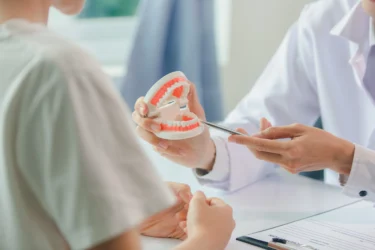
Manuka honey can keep your teeth and gums healthy. It can help avoid dental plaque formation by means of its anti-microbial action and can stop bad mouth bacteria in their tracks. Less plaque means fewer cavities and gum diseases.
According to one study, sucking on a chew of manuka honey might be more efficient at reducing plaque and gingival bleeding. I strongly recommend the consumption of manuka honey13.
Dr. Rajeev Singh, BAMS

Manuka honey can help you find relief from cough and sore throat due to an upper respiratory tract infection. Thanks to its soothing coat for the throat, Manuka honey can lessen the pain of a sore throat. Clinical studies suggest that honey, including Manuka kind, may be helpful to tone down cough symptoms even better than over-the-counter cough suppressants4.
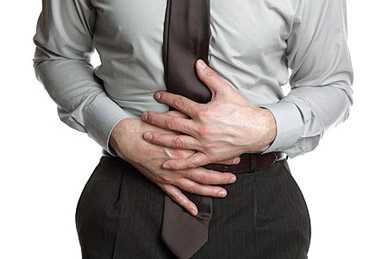
Studies hint that Manuka honey may be helpful to shield against stomach ulcers by curbing inflammation and supporting healing in your stomach lining. Animal and lab studies validate that Manuka honey may be useful in managing stomach ulcers5. However, to seal the deal, more human studies are needed.

Manuka honey can boost gut health and ease digestive woes like belly pain and diarrhea. As a prebiotic, Manuka honey encourages the growth of helpful gut microbes such as bifido bacteria and lactobacilli. Lab studies show that it may hold some promise for people with bowel disease. They reveal that Manuka honey may be able to fight harmful gut bacteria causing severe diarrhea and bowel swelling, like Clostridioides difficile6.
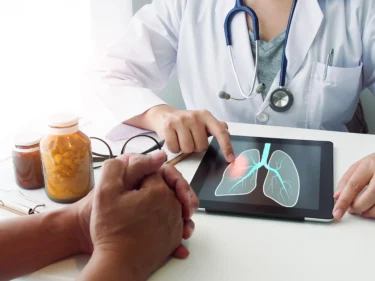
Manuka honey might possibly be beneficial for cystic fibrosis patients. It helps deal with cystic fibrosis-related infections Studies show Manuka honey used with antibiotics can be helpful to manage infections resistant to standard treatments such as Pseudomonas aeruginosa and Mycobacterium abscessus, which are common in cystic fibrosis7,8.
If you’re looking to try out Manuka honey, you must pick a top-quality one for best health benefits. Moreover, proper storage and correct dosage are essential to reap all its perks. We’ve got some tips to share on this.
The usual serving of Manuka honey is 1-2 teaspoons (5-10 grams) per day. But always remember, while this honey offers health benefits, it is high in sugar. So, moderation is key!
Manuka honey is usually safe. But do check with your doctor if you have diabetes, honey or bee allergies, or any health concerns. If you’re a diabetic, allergic to honey or have developed allergies to honeybee stings in the past, or have infants under one year, Manuka honey may not be suitable for you. It could hike up your blood sugar levels or cause botulism trouble for babies11,12. Its high sugar content could also upset your gut. Also, pregnant and breastfeeding ladies must always consult their healthcare provider before using any natural remedy, including Manuka honey.
Manuka honey is a great natural remedy packed with a diverse range of health benefits. Its potent antibacterial qualities come in handy with its potential in the management of wounds. Not just that, it may offer relief in oral health troubles and some potential benefits in the relief of symptoms of upper respiratory infections as well. Besides that, it may be beneficial in bolstering gut health, it may be helpful in aiding tackling of gastric ulcers, and is a boon for people suffering from cystic fibrosis. But, when you’re buying Manuka honey, opt for a top-quality product with UMF rating. Take it in measured amounts and do check with your doctor about how to use it. Keeping these pointers in mind, you just might find that Manuka honey is a great addition to your health routine.
Set apart by its super antibacterial properties and rich nutrition, Manuka honey offers a host of health benefits. This makes it unlike your everyday honey.
Bees who feed on the Manuka bush produce this honey. Unlike regular honey, Manuka honey has an added compound called MGO. Due to this compound, it has a stronger antibacterial shield.
Yes, you can generally consume 1-2 teaspoons (5-10 grams) of Manuka honey daily. But remember, Manuka honey contains high sugar. So too much of it could spike your blood sugar levels or disturb your gut. It’s best to discuss with your healthcare provider about the right dosage based on your needs.
It’s because of its unique source and manufacturing in Australia and New Zealand. Its mighty antibacterial features and high nutrient worth also bump up its price. So, when you are buying Manuka honey, remember, you’re investing in a health-booster packed with numerous benefits.
Manuka honey isn’t a cure-all strategy, but it can be used alongside other kinds of conventional treatments, medical opinion might be needed for appropriate treatment as it is not a substitute for medical or surgical treatments.
Disclaimer: The information provided here is for educational/awareness purposes only and is not intended to be a substitute for medical treatment by a healthcare professional and should not be relied upon to diagnose or treat any medical condition. The reader should consult a registered medical practitioner to determine the appropriateness of the information and before consuming any medication. PharmEasy does not provide any guarantee or warranty (express or implied) regarding the accuracy, adequacy, completeness, legality, reliability or usefulness of the information; and disclaims any liability arising thereof.
Links and product recommendations in the information provided here are advertisements of third-party products available on the website. PharmEasy does not make any representation on the accuracy or suitability of such products/services. Advertisements do not influence the editorial decisions or content. The information in this blog is subject to change without notice. The authors and administrators reserve the right to modify, add, or remove content without notification. It is your responsibility to review this disclaimer regularly for any changes.
Did you know that some foods can mess with your medicines? This can happen even with everyday foods like grapefruit or coffee. It is important to avoid such food-drug interactions to prevent any adverse events and maintain the effectiveness of the medicine1.
In this article, we’ll discuss about the food interactions which can occur with the drug, metformin. Metformin is a common medicine prescribed for the management of Type 2 Diabetes. We’ll talk about Metformin’s intricate relationship with foods, when to take it, and more2.
Did you know?
Metformin is a drug that helps bring down your blood sugar levels. It is mainly used to manage Type 2 diabetes3.
Metformin is available in different doses and forms. These include tablets, oral solutions, and even extended-release tablets. Your doctor will prescribe the right form and dosage based on your health condition and lifestyle.
Mostly, Metformin is stored at room temperature. It should be placed away from moisture or heat. Also, keep it out of reach of children.
Metformin mainly works by reducing glucose production by the liver. By doing so, it helps lower overall blood sugar levels. It also improves the body’s response to insulin and helps cells use insulin better, making it easier for them to take in glucose from the blood4,5. If you have type 2 diabetes, your healthcare provider may prescribe Metformin.
Certain food items and alcohol can affect Metformin’s effects6,7. We will discuss this in detail in the coming sections.
In my experience, I have observed that use of metformin might lead to vitamin B12 deficiency. It is important to be aware of the potential risk and consider regular monitoring of your vitamin B12 levels, as well as discussing the need for supplementation with your healthcare provider13.
Dr. Siddharth Gupta, BAMS, MD (Ayu)
Food choices play a big role in managing type 2 diabetes. While they don’t directly counteract Metformin’s actions, overeating or bad food choices can increase its efforts to control blood sugar.
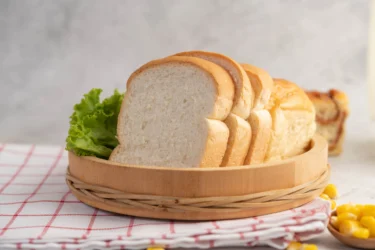
Certain foods can get in the way of Metformin. These are processed carbohydrates, saturated fats, trans fats, and too much sodium. While not opposing Metformin directly, they can spike up your glucose and insulin levels.
Detailed list of Foods to Avoid
Saturated fats can also make you more insulin resistant, which can make weight loss and blood sugar management more difficult. Fatty foods can delay gastric emptying and contribute to, prolonged postprandial hyperglycaemia (high blood sugar levels after food), which can be problematic over the long term. Sodium does not directly affect blood glucose or Metformin, but it increases cardiovascular risk and blood pressure, which are comorbid concerns in diabetes8. Also, some studies6 have found that a high-fat, high-calorie diet can slow the absorption of metformin.
So, although these foods don’t directly interfere with Metformin’s pharmacologic action, they can oppose its intended effect by raising blood glucose levels, adding to Metformin’s workload.
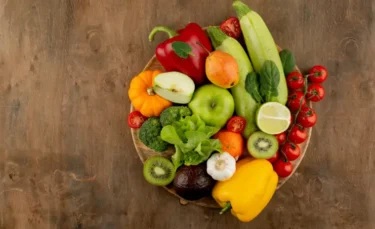
Some foods can make it hard for Metformin to work. Yet, some others support Metformin’s actions. These are complex carbohydrates, healthy fats, fibre, lean proteins, and select fruits and vegetables9.
Detailed List of Beneficial Foods
Consuming these foods along with Metformin can support your blood sugar balance. Plus, it can help keep your weight in check. But please note that not all fruits are low glycaemic. Portion control and glycaemic index should be considered especially if you are diabetic. Your doctor can guide you best on what type of foods you can eat based on your blood sugar control.
Based on my experience, I have found that metformin typically does not cause low blood sugar (hypoglycaemia) when taken alone. However, it is important to be cautious when combining metformin with other diabetes medications like insulin or gliclazide, as these combinations may increase the risk of hypoglycaemia13.
Dr Rajeev Singh,BAMS
Food choices matter a lot in diabetes, especially if they interact with drugs like Metformin. Here are some specific food items that can affect metformin.
Grapefruits are beneficial but found to interact with many drugs including Metformin. An old study on non-diabetic rats showed grapefruit juice might trigger a potentially fatal condition called lactic acidosis when mixed with Metformin10. Lactic acidosis is a rare but serious side effect of metformin, typically in patients with renal impairment or other risk factors.
Grapefruit inhibits CYP3A4 enzymes, affecting drugs metabolized by this pathway (e.g., statins, calcium channel blockers). However, Metformin is not significantly metabolised by CYP enzymes, including CYP3A4. So, this seems to be an overemphasised claim. Yet, we don’t have any human case studies indicating a similar reaction with Metformin and grapefruit so far. More research is needed here.
Alcohol consumption may also interact with Metformin’s action. Taking alcohol and Metformin together may cause lactic acidosis, a rare but serious condition7. Still, this could happen only if you drink alcohol heavily and regularly. It can also swing your blood glucose levels both ways – high (hyperglycaemia) and low (hypoglycaemia). Moderate drinking usually isn’t problematic unless you have kidney or liver issues. (Note that moderation as per guidelines is termed as no more than one drink per day, for women, and for men, a moderate amount is no more than two drinks per day.)
Drinking alcohol regularly can also exacerbate kidney and liver issues, so talk with your doctor if you suffer from non-alcoholic liver disease or kidney disease before consuming alcohol with Metformin.
Wondering how to take metformin the right way? Let’s see how and when to take Metformin for best results.
When taking Metformin, timing is important for minimizing side effects (like GI upset) and optimizing blood glucose control. Normally, immediate-release tabs are taken twice a day while extended-release tabs are taken once daily. Keeping to this schedule helps manage diabetes effectively.
Taking Metformin with meals can cut down its side effects like gas, bloating, nausea, and diarrhoea. Extended-release Metformin is usually taken with the evening meal to reduce gastrointestinal side effects and enhance overnight control.
Metformin, a widely prescribed medication for managing Type 2 diabetes, offers significant benefits, but users should be aware of potential side effects. Commonly reported metformin side effects include gastrointestinal symptoms like nausea, diarrhoea, and abdominal discomfort, although these often subside with continued use.
Continued use often leads to a gradual diminishment of these symptoms.
Metformin Side Effects in Females:
Metformin Side Effects in Males:
If your health changes or you spot signs like muscle pain, feeling tired, abdominal complaints, uneven heartbeats, or problems in breathing, get immediate medical help. These could be early signs of lactic acidosis. It’s a serious but rare side effect of Metformin.
Also Read: Pantoprazole Foods to Avoid
When taking metformin for PCOS, it’s advisable to be mindful of certain foods. Limiting high-carbohydrate and sugary foods can enhance its effectiveness. Avoid excessive alcohol consumption and consider reducing intake of processed foods. Incorporating a balanced diet with whole grains, fruits, and vegetables is beneficial. Consulting with a healthcare professional for personalized dietary recommendations is essential for optimal PCOS management with metformin.
Another interesting aspect of Metformin is its effect on body weight. Over time, people using Metformin have reported a slight weight loss. But remember, this isn’t guaranteed for all users.
Researchers have noticed a link between Metformin and weight loss, which might be due to reduced hunger cues12. However, metformin’s weight loss effect is thought to be multifactorial, including improved insulin sensitivity, decreased hepatic glucose production, possible mild appetite suppression, and effects on gut hormones like GLP-1. But keep in mind, weight management isn’t only about medicine. It’s also about eating healthy and exercising regularly.
Also Read: Foods to Avoid While Taking Duloxetine
Long-term weight loss linked with Metformin varies from person to person and may not be as much as you’d want. An average drop of around six pounds after a year of treatment is seen. To kickstart and keep up the weight loss, diet tweaks and exercise are crucial elements as well.
Simply put, no. Metformin is specially made for patients with Type 2 diabetes. Though it has shown results in helping non-diabetic obese patients lose weight, this is an ‘off-label’ use and not approved by the FDA for non-diabetics. However, metformin is sometimes used off-label in PCOS and prediabetes with some evidence of benefit.
Also Read: What To Eat During Food Poisoning?
Dealing with food-drug interactions can be hard. However, understanding your body’s specific reactions can help keep good health and make your medication work best.
In short, matching wise food habits with Metformin can boost its effects in controlling Type 2 diabetes while making the wrong choices can increase its workload. Often, it’s about learning the potential interactions and making small food swaps in our daily meals. If you have diabetes, it’s best to discuss with your doctor and design the best diet plan that is suitable for your condition and does not impact your medications.
Moreover, simple things like watching your salt intake, staying hydrated, and exercising regularly can have a beneficial impact on your overall health. Remember, tiny tweaks in your diet and lifestyle can yield big health gains over time!
Also Read: 12 Foods That Are Necessary For A Healthy Liver!
As of now, there’s not enough proof to say coffee messes up Metformin. But remember, too much of caffeinated drinks might cause hydration issues. So, drink moderately.
Metformin may cause nausea, and if you also take insulin, Metformin can cause low blood sugar levels. This can be dangerous if you’re unable to keep liquids down, so call your doctor immediately if this is the case and you’re having trouble treating low blood sugars.
There are no adequate studies in women for determining infant risk when using this medication during breastfeeding. However, studies have shown that Metformin passes into breast milk in very low amounts but is generally considered compatible with breastfeeding. The American Academy of Paediatrics (AAP) and other authorities regard Metformin as usually safe during lactation. However, consult a doctor who will weigh the potential benefits against the potential risks before prescribing this medication while breastfeeding.
You may notice improvement in your blood glucose control in 1 to 2 weeks, but the full effect of blood glucose control may take up to 2 to 3 months. Ask your doctor if you have any questions about this.
Health pros suggest a low-carb, high-protein breakfast might work well with Metformin. Think eggs, lean meats, whole grains, and fresh fruits. It gives you main nutrients, lowers glycaemic spikes, and keeps you full till lunchtime.
Metformin-induced diarrhoea is thought to result from its impact on the gastrointestinal tract, causing increased fluid secretion and alterations in gut motility. Metformin increases intestinal glucose and bile acid concentrations, which can cause osmotic effects leading to increased fluid retention in the bowel. It may also alter gut microbiota and serotonin pathways affecting motility. Consultation with a healthcare professional is recommended for those experiencing persistent or severe diarrhoea while using metformin.
Metformin typically does not cause hypoglycaemia (low blood sugar) when used as a monotherapy. However, in combination with other diabetes medications that can lower blood sugar, there may be a higher risk of hypoglycaemia. It’s essential to follow healthcare provider guidance and monitor blood sugar levels regularly.
Metformin is occasionally prescribed during pregnancy for gestational diabetes but should only be used under the guidance of a healthcare professional. Individual health considerations and potential risks to the mother and foetus need to be carefully evaluated before making any decisions about medication during pregnancy.
While metformin is generally considered safe for the kidneys, there’s a rare risk of lactic acidosis, a serious condition. It’s crucial for individuals with kidney issues to consult with a healthcare professional to determine the appropriateness of metformin and to monitor kidney function regularly.
Yes, metformin is known to reduce insulin resistance, a key factor in type 2 diabetes. It improves insulin sensitivity, allowing cells to better respond to insulin and promoting better regulation of blood sugar levels.
No, metformin is not habit-forming. It is an oral medication commonly prescribed to manage type 2 diabetes and does not possess addictive properties. Always follow your healthcare professional’s guidance on medication use.
Metformin for prediabetes can be effective in slowing or preventing the progression from prediabetes to diabetes. However, individual responses vary, and it’s essential to consult with a healthcare professional for personalized advice on its use and to incorporate lifestyle changes for comprehensive prediabetes management.
Stopping metformin suddenly can mess with your blood sugar. Always talk to your doctor before making any changes to your medication, so they can help you do it the right way.
Metformin is generally considered safe for the liver, but in rare cases, it may cause an increase in liver enzymes. Regular monitoring and consultation with a healthcare professional are recommended to ensure the medication’s safety and address any potential concerns.
Signs that metformin is working include stable blood sugar levels, better insulin sensitivity, and reduced symptoms related to the medical condition. Regular check-ups with a healthcare professional help track and confirm its effectiveness for each individual.
Disclaimer: The information provided here is for educational/awareness purposes only and is not intended to be a substitute for medical treatment by a healthcare professional and should not be relied upon to diagnose or treat any medical condition. The reader should consult a registered medical practitioner to determine the appropriateness of the information and before consuming any medication. PharmEasy does not provide any guarantee or warranty (express or implied) regarding the accuracy, adequacy, completeness, legality, reliability or usefulness of the information; and disclaims any liability arising thereof.
Do you wonder what duloxetine is? Duloxetine belongs to the serotonin-norepinephrine reuptake inhibitors (SNRIs) class of drugs and is used in the management of mental health conditions like major depressive disorder (MDD) and generalised anxiety disorder (GAD) and other conditions like diabetic neuropathy1, fibromyalgia2, and chronic musculoskeletal pain. For individuals on duloxetine, it is vital to know about food and drug interactions of the medication and its side effects as these factors may influence the effectiveness of the medicine3.
Before exploring which foods and substances to avoid when on duloxetine, let’s first understand how the medicine works and its interactions with other drugs, supplements and herbal products along with other considerations. Each person responds differently to a medicine, so you should consult your doctor before making any major changes to your medicine.
Duloxetine works by increasing the levels of serotonin and norepinephrine in the brain. These are important chemicals that affect mood and pain sensations. Duloxetine does not let these chemicals be reabsorbed, allowing them to stay active in the spaces between nerve cells.
This action helps improve communication between nerve cells, influencing mood positively and reducing the perception of pain signals. Essentially, duloxetine’s role is to enhance the effects of serotonin and norepinephrine, making it effective in treating conditions like major depressive disorder, generalised anxiety disorder, and certain types of chronic pain. Individual responses to the drug may vary; therefore, it’s essential for individuals to consult their doctor for personalised information and guidance regarding duloxetine uses.
Did you know?
If you’re on duloxetine, some foods and drinks are best avoided. Here’s some foods you should watch out for.

It is safer to avoid alcohol if you are on duloxetine as the combination may increase some side effects of the drug and may lead to potentially harmful interactions. Both alcohol and duloxetine can cause CNS depression, potentially leading to excessive sedation. Alcohol may also interfere with duloxetine’s ability to improve mood, reducing its therapeutic benefit. Additionally, since both are metabolised in the liver, using them together increases the risk of liver toxicity4.
Taking alcohol with duloxetine could cause:
Both the manufacturer (FDA label) and doctors strongly recommend limiting or avoiding alcohol, particularly if you have a history of liver disease or depression. Always check with your doctor before consuming alcohol during duloxetine treatment4.
I want to emphasise that when prescribed to take duloxetine, it is important to especially avoid drinking alcohol as it may potentially increase the risk of liver damage. Prioritising your health and adhering to your doctor’s recommendations will ensure the safest and most beneficial use of this medication.
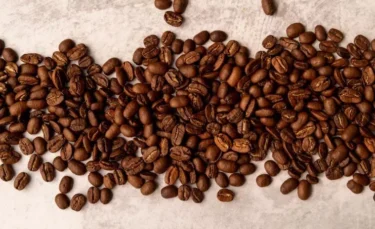
Keep an eye on your caffeine intake while taking duloxetine. Although caffeine doesn’t directly interfere with how the medicine works, it may worsen certain side effects, such as jitteriness, anxiety, or trouble sleeping, especially if you’re sensitive to stimulants. In some cases, too much caffeine may reduce duloxetine’s calming benefits by increasing restlessness or anxious feelings5.
To manage your caffeine intake:
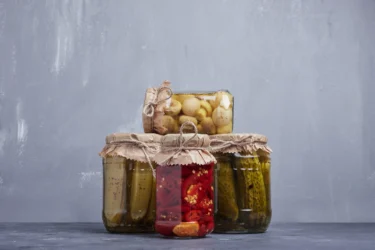
Although duloxetine is not a monoamine oxidase inhibitor (MAOI), some people worry about its interaction with high-tyramine foods. However, current research has not shown any significant risk, and duloxetine does not inhibit the MAO enzyme. That said, if you want to be cautious, it’s you may limit foods high in tyramine, such as:
If you are curious to know the drugs that may not work well with duloxetine, let’s find out. Always inform your doctor about all the medicines, supplements, or herbal products you currently take or are planning to take, to help avoid any possible interactions.
Taking duloxetine with other medicines for mental health issues may increase side effects or cause complications.
Some examples of such medicines include:
How to manage drug interactions?
Here are a few simple precautions to help manage drug interactions while on duloxetine:
NSAIDs could increase the risk of gastrointestinal bleeding when used with duloxetine, which could lead to:
How to manage this interaction?
Here are a few precautions to manage the interaction of NSAIDs with duloxetine:
Combining amphetamines with duloxetine may lead to side effects like:
How to manage this interaction?
These precautions may help you manage the interactions of amphetamines with duloxetine:
You need to know how supplements and herbs can interact with duloxetine. So, always discuss all supplement and herbal product use with your doctor7.
There are no specific reported interactions between duloxetine and most vitamins or minerals. However, it’s still important to inform your doctor about any supplements you take, as certain combinations may affect how well the medicine works.
Some herbal supplements may not be safe to take with duloxetine. For example, combining St. John’s Wort with duloxetine may increase the risk of serotonin syndrome, a potentially serious condition linked to excess serotonin in the body6. Kava, another herbal product, may increase the risk of liver damage when taken with duloxetine. While there is no strong evidence that these herbs reduce the effectiveness of duloxetine, they can increase its side effects or lead to harmful interactions.
Some tips on safe herbal usage:
If you feel nauseous or unwell while taking duloxetine, it is advisable to avoid heavy meals and spicy or greasy foods. Easily digestible foods can reduce stomach discomfort and make you feel more at ease. Always let your doctor know if your nausea persists or worsens.
Also Read: 13 Foods That Are Difficult To Digest!
Certain factors like an individual’s vaccination status, laboratory test requirements, and health history can influence the effect of duloxetine.
Based on available data, there are no known interactions between duloxetine and most vaccines. However, it is advisable to consult your doctor before taking a vaccine if you are on duloxetine.
Duloxetine is not known to interfere with common lab test results. However, if you have been scheduled for any tests, let your doctor know you are taking duloxetine for better interpretation of your test results.
Your past and present health conditions can influence the effect of duloxetine. It is advisable to share your full medical history with your doctor, especially if you are pregnant or plan to conceive or have or have had:
Also Read: 12 Foods That Are Necessary For A Healthy Liver!
Some duloxetine side effects may specifically affect women and may vary from person to person:
Duloxetine may lead to certain side effects that are more commonly seen in men:
If you experience any of these symptoms, it is essential to consult your doctor and discuss your concerns openly.
Duloxetine may affect sexual health in both men and women. These effects can vary but may include:
Also Read: What To Eat During Food Poisoning?
Understanding how duloxetine may interact with certain foods, beverages, drugs and more supports better health and more effective use of the medication. It is important to consider your overall health and lifestyle when taking medication.
While on duloxetine, it is recommended you stay in touch with your doctor. Always share details of other medications and supplements you are taking with your doctor as they can influence your treatment. This allows your doctor to check for possible interactions, devise coping strategies, and adjust your treatment if needed.
Also Read: Pantoprazole Foods to Avoid
The onset of duloxetine’s therapeutic effects varies, but many individuals may start experiencing improvement in their symptoms within 1 to 4 weeks after initiating treatment. However, it’s essential to consult with a healthcare professional for personalised guidance on the duration of duloxetine’s effectiveness.
Taking duloxetine during the third trimester of pregnancy may increase the risk of neonatal adaptation syndrome, which can cause symptoms such as tremors, irritability, feeding issues, and breathing problems in newborns9.
Speak to your doctor before using duloxetine during pregnancy to weigh the possible risks and benefits based on your health and your baby’s well-being.
Taking duloxetine at night is generally acceptable, but it’s advisable to follow your healthcare provider’s recommendation for the most effective and personalised dosing schedule. Always consult with your healthcare professional to ensure the dose timing aligns with your specific health needs.
Duloxetine and Wellbutrin should be used cautiously together because they affect different neurotransmitters in the brain. Taking them together may increase the risk of side effects or adverse reactions. Consulting a doctor may help manage potential drug interactions, ensuring a safer and more effective treatment plan10.
Taking duloxetine and gabapentin together requires caution because both medications can have central nervous system effects. The combination of these two medicines may increase the risk of side effects such as dizziness, drowsiness, or difficulty concentrating. Consulting a doctor is crucial to assess individual factors, minimise risks, and ensure a safe treatment plan.
Yes, fatigue is a common side effect of duloxetine. If you experience excessive tiredness or drowsiness while taking the medication, you should inform your doctor and discuss potential adjustments in dosage or alternative treatment options.
Yes, constipation is a recognised side effect of duloxetine. If you encounter persistent constipation while using duloxetine, it is recommended to consult with your healthcare provider for potential management strategies or adjustments to your treatment.
Duloxetine may contribute to increased energy levels in some individuals as it affects neurotransmitters. However, individual responses vary, and if you experience concerns about energy levels or fatigue while taking duloxetine, consulting your doctor is advisable for personalised guidance.
Duloxetine may not be suitable for individuals with bipolar disorder, as it can potentially trigger manic or hypomanic episodes. It is essential to discuss any history of bipolar disorder with a doctor before starting duloxetine to ensure an appropriate treatment plan.
Disclaimer: The information provided here is for educational/awareness purposes only and is not intended to be a substitute for medical treatment by a healthcare professional and should not be relied upon to diagnose or treat any medical condition. The reader should consult a registered medical practitioner to determine the appropriateness of the information before consuming any medication. PharmEasy does not provide any guarantee or warranty (express or implied) regarding the accuracy, adequacy, completeness, legality, reliability or usefulness of the information; and disclaims any liability arising thereof.
Most of the time, we don’t feel our heartbeat. And this is because, when our heart’s rhythm is normal, we usually don’t notice it. But, when it changes, we start to feel it. This is known as heart palpitation. It could be your heart beating too slow or too fast or even feeling like it stopped. Heart palpitations often feel like a fluttering, rapid, or irregular heartbeat. Individuals may feel that their heart is pounding, racing, or experiencing a skipped beat. Palpitations usually aren’t harmful, but they can be uncomfortable causing worry. Sometimes, they may be associated with underlying medical conditions.
Palpitations can arise for many reasons. These might be stress, heavy doses of caffeine or nicotine, excessive alcohol, hormones changing in women, certain medications or anaemia. Other heart palpitations reasons can be hyperactive thyroid, low potassium, or hypoglycaemia, irregular heartbeat or serious heart disease. In rare cases, a heart attack might also cause them1.
Did you know?
To effectively manage heart palpitations, you first need to diagnose the underlying cause. You must know when to get help and understand what your doctor may suggest.
If heart palpitations come with chest pain, shortness of breath, intense dizziness or a feeling of doom, it needs immediate medical attention. These heart palpitations symptoms could mean severe issues like arrhythmias or heart disease1.
Your healthcare provider will give you a physical check-up, listen to your heartbeats and look at your medical history. They may suggest some additional tests1.
The following cardiovascular assessments may be advised:
Dealing with heart palpitations requires multiple simultaneous approaches. Medical procedures, home remedies, and changes in diet can all come into play.
If heart palpitations are arising due a heart condition, medical procedure or medicine use may not be needed. In case of other underlying causes too such as hormonal issues or anaemia, medical management may be necessary. Your doctor can advise you best based on your condition1.
At home, you can also take some steps for managing heart palpitations. Avoiding things that spike palpitations can help. Controlling stress is also important. Yoga, meditation, and deep breathing can assist in this. Be sure not to use drugs like cocaine as they can cause palpitations too1.
Vagal maneuvers can slow your heart rate by stimulating the vagus nerve. This can involve putting cold water on your face, trying to gag, or dunking your face in cold water. But before trying these steps, consult your healthcare provider5.
Changing your diet can help avoid foods causing palpitations and increase those calming them.
Caffeine might potentially exacerbate heart palpitations in susceptible individuals. Therefore, if you experience heart palpitations, I strongly advise avoiding drinks or foods that contain caffeine, such as cola12.
Dr. Siddharth Gupta, B.A.M.S, M.D (Ayu)
Did you ever think about how much our diet influences heart palpitations? Some foods can lead to palpitations, while others can lessen them.
If you’re wondering what foods to avoid if you have heart palpitations, these are some of the foods that can actually set off or intensify palpitations in people prone to them.
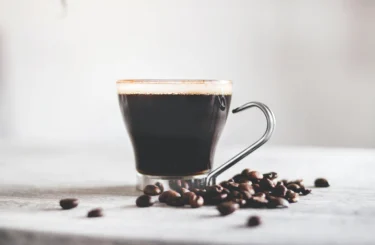
Caffeine and energy drinks can stimulate the nervous system causing heart palpitations. Even though occasional use is safe, too much caffeine can cause palpitations6,7.

Excessive alcohol use can also cause heart palpitations. Cutting down or avoiding alcohol can help manage them1,6.
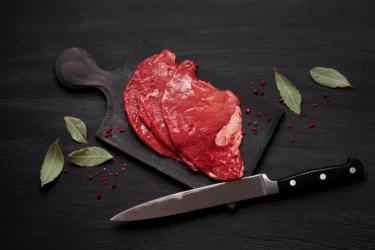
Red meat, high in saturated fats, can raise cholesterol and trigger palpitations. Swapping red meat for plant-based protein can aid in reducing this risk8.
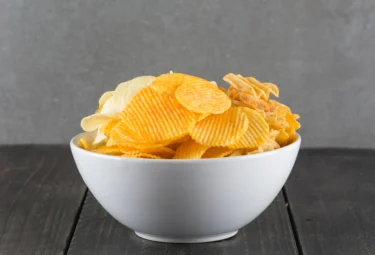
Highly processed foods such as canned soups or packaged meals often contain too much salt and preservatives. These could disturb the heart rhythm causing palpitations. Opting for fresh foods instead of processed ones is a more heart-healthy option6.

Excessive sugar intake can contribute to heart palpitations, as it may lead to sudden spikes and crashes in blood sugar levels. Limiting high-sugar foods can help manage blood sugar and lowers risk of heart diseases, thereby reduce the likelihood of associated palpitations6.
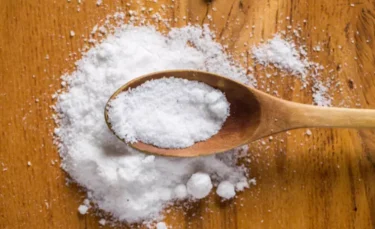
More salt means increased risk of high blood pressure thus more chance of palpitations. So, cut down on salt and keep palpitations in check6.
It’s ideal to avoid or consume the above-mentioned food items in limited quantity if you suffer from palpitations. However, for a more personalized plan, it’s best to discuss with a certified nutritionist.
But it’s not all doom and gloom. Some foods could help reduce frequent heart palpitations and support overall heart health.
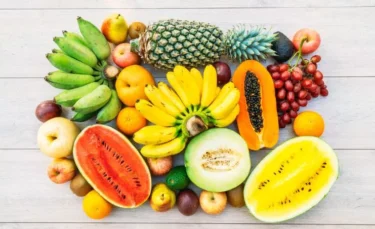
Fresh fruits are heart-healthy. They contain essential vitamins and potent antioxidants. Their soluble fibre can also lower bad cholesterol levels decreasing palpitations9.
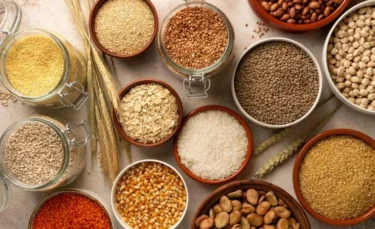
Whole grains support heart health through ample fibre content. This removes harmful cholesterol types, thus reducing the chance of heart disease and palpitations9.
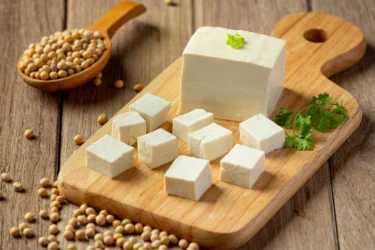
Soy foods are rich plant-based proteins. They offer various heart benefits like reducing blood pressure and cholesterol levels, helping in reducing palpitations10.
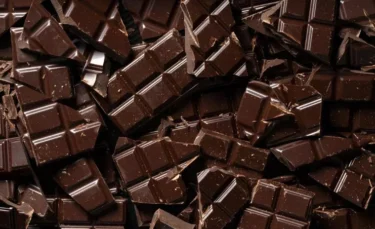
Magnesium is a mineral that helps proper functioning of heart. Magnesium administration has been shown to be beneficial in certain heart rhythm disoorders7. Thus, consuming foods rich in magnesium such as dark chocolate, avocado and nuts can help lower palpitations6.
Although further research is needed, some studies have found the benefits of a plant-based diet to help support normal heart rhythm7. It’s a good idea to follow a balanced diet and include the above-mentioned foods in your diet if you suffer from palpitations. But discuss with your doctor before including anything new in your routine diet if you suffer from underlying medical conditions.
Based on my understanding gained over the years, it is worth noting that certain foods, such as salami, and aged cheeses might potentially contribute to heart palpitations. These foods may contain a compound called tyramine, which has been associated with increased blood pressure13.
Dr. Rajeev Singh, BAMS
Lifestyle changes can have a big role in managing heart palpitations and keeping your heart healthy. Let’s see on how to do that.
I may suggest to stay away from consuming spicy foods, particularly when it comes to conditions such as heart palpitations. In my experience, I have observed that spicy foods might potentially trigger heart palpitations in certain individuals14.
Dr. Smita Barode, B.A.M.S, M.S.
Knowing more about heart palpitations, triggers, and effective management helps you lead a healthier life. Keeping active, having a balanced diet, getting enough rest and reducing stress can manage palpitations. Avoid food items like caffeinated drinks, excessive alcohol, red meat, processed or sugary foods and too much salt. But don’t forget that medical issues can also cause palpitations. So, always stay alert and seek medical help when needed.
Also Read: Food Items To Include In Your Diet If You Have Varicose Veins
A diet containing less known cardiac irritants and good amount of exercise, sleep and stress management can care for your heart.
If changing diet doesn’t ease heart palpitations, reach out to your healthcare provider. The palpitations might point to a hidden health issue needing medical attention.
While most palpitations are harmless, they can be discomforting. If they come with chest pain, loss of consciousness, uncommon sweating, dizziness or light-headedness, it’s serious. Seek medical help right away in such cases.
While occasional heart palpitations while sleeping can be normal, persistent or disruptive cases may indicate an underlying issue and should be evaluated by a healthcare professional for a comprehensive assessment.
In some cases, excessive gas and bloating may lead to increased pressure on the heart, causing palpitations. If symptoms persist or worsen, it’s advisable to consult a healthcare professional for a thorough evaluation.
To alleviate heart palpitations, try practicing deep breathing exercises, staying hydrated, and avoiding stimulants like caffeine. If symptoms persist or worsen, seek medical advice for a proper diagnosis and personalized treatment plan.
Yes, dehydration can contribute to heart palpitations by reducing blood volume and affecting electrolyte balance. Maintaining adequate hydration is important for cardiovascular health and may help prevent palpitations.
Vaping may contribute to heart palpitations, as certain substances in e-cigarettes can impact cardiovascular function. The long-term health effects of vaping, including its impact on heart health, are still being studied. Consultation with a healthcare professional is recommended for individuals experiencing palpitations related to vaping.
Yes, hormonal changes during menopause, particularly the decrease in oestrogen levels, can lead to heart palpitations in some women. While usually temporary, persistent or severe symptoms should be discussed with a healthcare professional.
Yes, gastro oesophageal reflux disease (GORD) can be associated with heart palpitations. The irritation of the oesophagus due to reflux may stimulate the vagus nerve, impacting heart rhythm. Consultation with a healthcare professional is advised for a proper evaluation.
The duration of heart palpitations varies, and they may last for a few seconds to several minutes. If palpitations persist or are accompanied by other concerning symptoms, it is advisable to consult a healthcare professional for a thorough evaluation.
Heart palpitations after eating can be triggered by various factors, such as the release of digestive hormones, increased blood flow to the digestive system, and consumption of stimulants like caffeine or high-sugar foods. Additionally, overeating or underlying medical conditions may contribute to this phenomenon.
Certain vitamins like magnesium and potassium play a role in maintaining heart rhythm, and deficiencies may contribute to palpitations. Ensuring a balanced diet with adequate levels of these vitamins can help support heart health and reduce the occurrence of palpitations.
For minimizing heart palpitations during sleep, lying on your left side is often recommended. This position can help reduce pressure on the heart and promote better blood flow, potentially decreasing the likelihood of palpitations.
Factors like anxiety, hormonal fluctuations, or sleep apnoea can contribute to heart palpitations at night; managing stress, maintaining a consistent sleep schedule, and addressing underlying health issues may help alleviate nighttime palpitations.
Disclaimer: The information provided here is for educational/awareness purposes only and is not intended to be a substitute for medical treatment by a healthcare professional and should not be relied upon to diagnose or treat any medical condition. The reader should consult a registered medical practitioner to determine the appropriateness of the information and before consuming any medication. PharmEasy does not provide any guarantee or warranty (express or implied) regarding the accuracy, adequacy, completeness, legality, reliability or usefulness of the information; and disclaims any liability arising thereof.
Links and product recommendations in the information provided here are advertisements of third-party products available on the website. PharmEasy does not make any representation on the accuracy or suitability of such products/services. Advertisements do not influence the editorial decisions or content. The information in this blog is subject to change without notice. The authors and administrators reserve the right to modify, add, or remove content without notification. It is your responsibility to review this disclaimer regularly for any changes.
Beautiful yellow sunflower fields are a delight. It is from such blossoms’ seeds from where sunflower oil is derived. This bright-hued oil is a regular feature in supermarkets. But what goes into making it? Is it truly a health must-have? Or should we worry about its usage?
To answer these questions, let’s dive into an exploration of sunflower oil. We’ll look at its origin, nutritional makeup, pros and cons, and how it fares against other oils.
Did you know ?
Sunflower oils are extracted from the seeds of the Sunflower plant which is scientifically know as Helianthus annuus1. This oil is considered the second most widely oil in healthy diets due to its high nutritional contents2. It contains vitamins, minerals, proteins, flavonoids, amino acids, antioxidants, unsaturated fatty acids and fibers, which contributes to its various health benefits1. This is the only oil which has 46% of oil and 16% proteins, which makes it to rule both the market which has sell oil and proteins separately3.
Originating from North America, sunflowers were used by Indigenous people for thousands of years. Widespread usage of sunflower oil started in the 18th Century, after reaching Russia. They made use of sunflower seeds for food, ornaments, and medicinal purposes4.
To extract sunflower oil from sunflower seeds, it should undergo either cold-press method or refined method.
Did you know sunflower oil comes in different types? Let’s look at those.
Each type of sunflower oil offers unique benefits. High-oleic oil survives high heat, while high-linoleic oil doesn’t do well when heated. Mid-oleic oil offers a bit of both: stability under heat and a good mix of monounsaturated and polyunsaturated fats9.
Here’s a quick comparison of their key traits9:
Let’s delve into what makes sunflower oil a nutrient-dense option10.
From what I’ve seen, I have observed that incorporating sunflower oil into your diet might have positive effects on your lipid profile, specifically by reducing plasma triacylglycerol levels19.
Dr. Siddharth Gupta, BAMS, MD (Ayu.)
Sunflower oil, boasting key nutrients, offers quite a few health benefits.
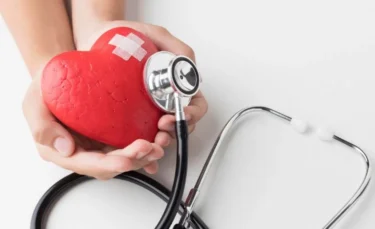
High-oleic sunflower oil, rich in monounsaturated fats, is linked with heart health. Some studies credit these fats with normalizing cholesterol, blood sugar, and blood pressure, hence lowering the risk of heart disease11. Although further studies are needed to confirm this benefit.

Sunflower oil also helps skin care. It’s rich in vitamins, proteins and fatty acids10. Hence it can act as an antioxidant and anti-inflammatory agent, that may help protect the skin barrier, reduce inflammation, promote wound healing, provide hydration and soften the skin12.

Sunflower oil is rich in Vitamin E, which aids the body’s defense system. It beefs up immunity and may help protect against infections, yet more research should be done13.
Based on my experience, I have seen that including sunflower oil in your diet may help protect your stomach from the side effects of certain medications. This is likely because sunflower oil can enhance your body’s natural anti-inflammatory response, which can reduce inflammation in the stomach19.
Dr. Rajeev Singh, BAMS
But beware, sunflower oil also has potential pitfalls. Specifically, the high-linoleic variant carries some risks.
Sunflower oil has several rivals on supermarket shelves. How does it compare?
Olive oil tops the health chart among cooking oils. Compared to sunflower oil, it stands up better to heating. It also boasts heart-health by lowering the bad cholesterol and increasing the good cholesterol16.
Canola is also considered as a healthy oil but it has a chemical substance called hexane which is added while extracting the oil, which affects the oil’s stability by removing omega 3 and producing the trans-fat. Even this oil cannot withstand over heating like sunflower oil. But in the market cold-pressed oil or virgin canola oil are available, which are very expensive17. Hence both the oils have same effects only and we need to know how to use them to gain better health benefits.
Coconut oil, despite its saturated fat content, doesn’t harm your heart if eaten sparingly and as part of a varied diet. However, there are few studies showing that it causes harm to heart health17.
American Heart Associates recommends following cooking oils to be included in diet for better heart health18:
However, there are a few measures that need to be taken while consuming them18.
Also Read: Health Benefits of Coconut Oil for Skin and Hair
Sunflower oil is a mixed bag. On one hand, it’s rich in nutrients and good fats. On the other hand, certain types (like the high-linoleic version) have potential downsides. The secret lies in knowing which type of sunflower oil you’re dealing with. High-oleic sunflower oil is a healthier choice, offering heart-helping monounsaturated fats. But traditional high-linoleic sunflower oil, rich in omega-6 fats and with less heat stability, isn’t its equal. So, choose wisely! Remember, mixing oils in your kitchen can diversify your diet’s nutrition and health benefit profile.
It depends on the sunflower oil type. High-oleic sunflower oil, rich in monounsaturated fats and stable under heat, is a healthier pick. But traditional high-linoleic sunflower oil, though filled with essential fats, is not as heat-resistant.
When compared to high-oleic sunflower oil, olive oil provides similar heart-healthy monounsaturated fats. But, olive oil, especially the extra-virgin kind, also offers a wide range of beneficial plant compounds and nutrients. This makes it an overall healthier choice.
High-linoleic sunflower oil is high in omega-6 fats. Too much of these can trigger inflammation, which can be a springboard for many health problems. Therefore, it is always recommended to consume in moderation.
Sunflower oil can be a healthy choice when used in moderation. It’s rich in unsaturated fats, particularly omega-6 fatty acids, which can benefit heart health when consumed as part of a balanced diet. However, it’s important to choose high-quality, cold-pressed oils and avoid excessive consumption due to their high-calorie content.
Sunflower oil can help improve cholesterol levels by increasing HDL (good) cholesterol and reducing LDL (bad) cholesterol when used as part of a balanced diet. Moderation and choosing healthier cooking methods, like baking or sautéing, are key to maximizing its benefits.
Sunflower oil is beneficial for hair health due to its high content of vitamin E, essential fatty acids, and antioxidants. It helps nourish the scalp, strengthen hair strands, and protect against damage from environmental stressors. Applying sunflower oil to hair and scalp regularly can promote shine and overall hair health. Although more research is needed to prove this benefit.
Sunflower oil is not directly related to weight loss but when used in moderation as part of a balanced diet, it can support weight loss due to its healthy fat content. Moreover, adopting a healthy lifestyle such as avoiding processed food high in calories can help maintain or reduce the weight.
Sunflower oil is primarily composed of unsaturated fats, with very low levels of saturated fat. It is considered a healthier cooking oil option due to its high content of monounsaturated and polyunsaturated fats, which can help lower cholesterol levels when used in place of saturated fats.
Sunflower oil provides essential fatty acids, such as omega-6 and omega-9, which support cell structure and overall body function. It can help maintain healthy cholesterol levels, promote heart health, and contribute to skin and hair health when used in moderation as part of a balanced diet.
Disclaimer: The information provided here is for educational/awareness purposes only and is not intended to be a substitute for medical treatment by a healthcare professional and should not be relied upon to diagnose or treat any medical condition. The reader should consult a registered medical practitioner to determine the appropriateness of the information and before consuming any medication. PharmEasy does not provide any guarantee or warranty (express or implied) regarding the accuracy, adequacy, completeness, legality, reliability or usefulness of the information; and disclaims any liability arising thereof.
Links and product recommendations in the information provided here are advertisements of third-party products available on the website. PharmEasy does not make any representation on the accuracy or suitability of such products/services. Advertisements do not influence the editorial decisions or content. The information in this blog is subject to change without notice. The authors and administrators reserve the right to modify, add, or remove content without notification. It is your responsibility to review this disclaimer regularly for any changes.
Are you aware of the buzz about oat milk and almond milk? These plant-based milk options have become very popular recently, especially for those who want to avoid dairy. This blog discusses in detail about these newer milk options. We’ll explore their nutritional facts, weigh their good and bad sides, evaluate their green credentials and safety concerns.
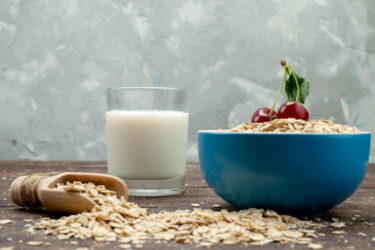
Oat milk is a non-dairy option made by blending soaked oats with water and filtering out the pulp. The result is a delicious, creamy drink that’s taken the plant milk world by storm.
Making oat milk is simple. You start by grinding whole oats, stirring them into water, and heating the mix. This process splits the oat starches. The liquid is separated from the oat mush and filtered. The end result is a thick creamy milk packed with fibres, especially beta-glucans.
Unlike some plant milks, oat milk boasts a smooth, buttery texture. It’s almost as rich as full-fat dairy milk. As for taste, oat milk is naturally sweet with a subtle oaty aftertaste. That’s why it is so popular in creamy dishes.
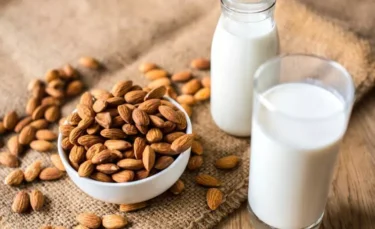
Now let’s check out almond milk. This non-dairy favourite has origins dating back to medieval times. It’s made mostly from almonds and water. Its mild texture and slightly nutty flavour have earned it many fans.
How do we make almond milk? First, we soak almonds in water overnight. Next, we drain the almonds and blend them with more water. Finally, we strain the mixture to remove the solids. What remains is a silky, pale milky-white liquid.
Almond milk has a light, thin consistency with a hint of nuttiness. Unsweetened versions are less calorie-dense. That’s why it’s popular among diet watchers and health buffs.
Though oat milk and almond milk are top-notch non-dairy options, their nutritional profiles can be quite different. These differences matter when picking one over the other.
Based on what I have observed, almond and oat milk are popular choices for non-dairy alternatives in India. These plant-based milk alternatives are often chosen by individuals who are lactose intolerant, have dairy allergies, or follow a vegan diet. The consumption of almond milk in India was found to be about 54% as compared to oat milk, which was about 29%9.
Dr. Siddharth Gupta, B.A.M.S, M.D (Ayu)
Apart from being lactose-free and vegan, oat milk and almond milk offer unique health perks tied to their ingredients. However, there are some drawbacks of both.

Oat milk is tasty and packed with nutrients, making it a great non-dairy milk stand-in, especially for individuals allergic to tree nuts.
From what I have observed, a 240ml serving of oat milk contains approximately 130 calories, 24g of carbohydrates, 4g of proteins, and 2.5g of fats. Oat milk can be a suitable option for those looking for a plant-based alternative to dairy milk, providing essential nutrients in a convenient form9.
Dr. Rajeev Singh, BAMS
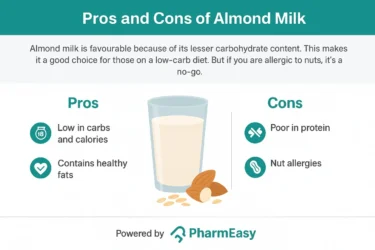
Almond milk is favourable because of its lesser carbohydrate content. This makes it a good choice for those on a low-carb diet. But if you are allergic to nuts, it’s a no-go.
Almond and oat milk offer different levels of nutrient richness. Almond milk has fewer calories, but it also provides less protein, carbs, and fibre. On the other hand, oat milk has more calories, but it also provides more of these vital nutrients.
Oat milk generally contains more added B vitamins than almond milk, and almond milk contains more vitamin E.7 However, both fortified almond and oat milks have the necessary vitamins and minerals like vitamin D and calcium. But remember, not all fortified brands are equal. Some may include thickening agents, artificial flavours, and excessive salt. So beware when you buy.
Oat milk has about 120 calories per cup, which is almost three times the calories in almond milk. Almond milk has just 37 calories per cup. For those counting calories, almond milk might be a better option1,2.
Oat milk has higher protein that is about 3 grams per cup. Almond milk trails with 1.5 grams per cup1,2. But cow’s milk has much higher protein that both, that is about 8 grams of protein per cup.8 In terms of carbs, oat milk is the clear winner with 16 grams per cup. Almond milk has just one gram per cup. As for fat, almond milk has more than oat milk1,2.
Based on what I have read, a 240ml serving of almond milk typically contains around 59 calories, 6g of carbohydrates, 1g of protein, and 4g of fats. These nutritional values make almond milk a viable option for individuals who are lactose intolerant or follow a plant-based diet9.
Dr. Smita Barode, B.A.M.S, M.S.
Both oat milk and almond milk leave a mark on the environment. Here we’ll explore water use, carbon emissions, and energy use in making these milks.
Think about allergies, additives, and sugar when thinking about safety.
Some people are allergic to almonds, so there’s a risk with almond milk. Oat milk could indirectly trigger allergies. This happens through possible gluten contamination. Those allergic to gluten need to be careful here and opt for gluten-free options.
Many varieties of oats and almond milk use things like gums to tweak their consistency and shelf life. Usually, these are safe. However, studies suggest that eating too much might mess up your digestion. Some almond milk brands use carrageenan, which has links to digestive troubles and gut inflammation.
Sugar content in these milks can vary a lot across brands. Unflavoured, unsweetened types have very little sugar, but flavoured types can be high in sugar. Always read the nutrition label to avoid extra added sugars.
Choosing between oat milk and almond milk rests mainly on personal taste, dietary needs, and green concerns.
If you’re trying to lose weight or if you’re diabetic, almond milk might be a good choice due to its low calorie and carb content. But if you’re looking to manage cholesterol or want a filling drink, oat milk wins due to its high fibre content.
Whether you prefer the creaminess of oat milk or the nuttier taste of almond milk guides your everyday choice.
If you’re looking for an eco-friendly option, oat milk wins hands down. It uses less water, land, and emits less CO2 during production.
Also Read: Goat Milk: Benefits, Uses, Side Effects & More!
In this blog post, we’ve dug deep into oat milk and almond milk. Both have a rightful place in the dairy-free movement. Both have their strengths. Almond milk wins with fewer calories, oat milk scores with higher fibre. One thing to note is that neither oat milk nor almond milk reach the protein content of cow’s milk. But you can get calcium, vitamin D, and vitamin B12 from fortified oat and almond milk versions.We didn’t intend to pit one milk against the other. Rather, we’ve tried to give you a clear picture of the pros and cons of each. Remember, the ultimate goal isn’t to find the ‘best’ milk, but to find the milk that’s ‘best for you’.
Also Read: Almond Milk: Uses, Benefits, Side Effects by Dr. Rajeev Singh
It depends. If you’re aiming to lose weight or are diabetic, almond milk with its lower sugar and calorie content might be right for you. On the other hand , oat milk is high in fibre and nutrients, which boosts heart health and immunity, and helps muscle grow. Consult a health professional for tailored advice.
Different types of milk suit different people. Each has its unique set of nutrients and caters to different diet needs or restrictions. Oat milk is as creamy as cow’s milk, but it provides less protein and more sugar. Cow’s milk offers protein and calcium but might trigger allergies. The ‘healthiest’ milk is the one that matches your particular health goals.
Both are suitable. Both oat milk and almond milk do not contain lactose. So, both are safe for individuals who are lactose intolerant or choose to avoid dairy.
Oat milk and almond milk both have low calorie options, but almond milk generally has fewer calories, making it a better choice for weight loss. However, the best option depends on individual nutritional needs and preferences.
Almond milk is better for managing cholesterol as it contains no cholesterol and is low in saturated fat. Oat milk, while slightly higher in calories, also helps lower cholesterol due to its beta-glucan fibre content.
Almond milk is generally better for diabetics because it has a lower carbohydrate content and glycaemic index compared to oat milk. However, unsweetened varieties of both can be suitable depending on individual dietary needs.
Almond milk tends to blend well with coffee without overpowering its flavour, while oat milk offers a creamier texture and natural sweetness that some prefer. The best choice depends on personal taste preferences and desired coffee experience.
Disclaimer: The information provided here is for educational/awareness purposes only and is not intended to be a substitute for medical treatment by a healthcare professional and should not be relied upon to diagnose or treat any medical condition. The reader should consult a registered medical practitioner to determine the appropriateness of the information and before consuming any medication. PharmEasy does not provide any guarantee or warranty (express or implied) regarding the accuracy, adequacy, completeness, legality, reliability or usefulness of the information; and disclaims any liability arising thereof.
Links and product recommendations in the information provided here are advertisements of third-party products available on the website. PharmEasy does not make any representation on the accuracy or suitability of such products/services. Advertisements do not influence the editorial decisions or content. The information in this blog is subject to change without notice. The authors and administrators reserve the right to modify, add, or remove content without notification. It is your responsibility to review this disclaimer regularly for any changes.
Palm oil is a widely used ingredient found in many everyday products, from food items to household goods. Despite its prevalence, there is often limited awareness about what palm oil is and how it is used.
Derived from the fruit of the oil palm tree, palm oil has become a common component in both edible and non-edible products due to its versatility, long shelf life, and cost-effectiveness. It is used in cooking oils, baked goods, snacks, margarine, cosmetics, soaps, and even cleaning products1.
This article explores the origins of palm oil, its various applications, and its nutritional profile. It also considers the ongoing discussions surrounding its impact on health and the environment. Comparisons with other types of oils will be included to help provide a balanced perspective.
Palm oil is an edible vegetable oil extracted from the fruit of the oil palm tree (Elaeis guineensis). Originally cultivated in the western and southwestern regions of Africa, the oil palm is now grown extensively across tropical regions, particularly in Southeast Asia. Due to its unique fat composition, palm oil has become a key ingredient in a wide variety of products worldwide1.
Palm oil production begins with the harvesting of oil palm fruits. The fruits are then steamed or boiled and mechanically pressed to extract the oil. It’s important to differentiate between palm oil and palm kernel oil, though both are derived from the Elaeis guineensis plant, palm oil comes from the fruit’s fleshy pulp, while palm kernel oil is obtained from the seed inside the fruit. Each oil has a distinct composition and is used in different culinary and industrial applications2.
Crude palm oil has a has a distinctive reddish-orange colour, primarily due to its natural carotene content, which is the same pigments that give carrots and tomatoes their vibrant hues. It also contains tocotrienols, a form of vitamin E. These naturally occurring compounds contribute to the oil’s oxidative stability and are part of its overall nutritional profile2.
Palm oil is available in various forms depending on the degree of processing. The two most common types found in consumer products are unrefined and refined palm oil3.
Palm oil has been the subject of considerable attention in discussions surrounding diet and health, largely due to its relatively high saturated fat content. Saturated fats, when consumed in excess, may influence cholesterol levels, which in turn can have implications for heart health. However, palm oil also contains a number of beneficial nutrients, including certain forms of vitamin E and essential fatty acids, which play important roles in supporting overall health.
It is important to consider the type and processing level of palm oil, as these factors can affect its nutritional properties and best use. Below is an overview of commonly available forms of palm oil, their characteristics, and typical applications:
Ever wondered the many ways palm oil is used in our daily life? Let’s take a look.
Palm oil is a common cooking ingredient thanks to its unique taste and adaptability. It’s particularly good for frying because it can withstand high heat.
Palm oil isn’t limited to the kitchen. It is a key ingredient in a variety of everyday non-food items.
Refined and fractionated palm oil is widely utilised in the food industry due to its distinct functional properties. It demonstrates excellent oxidative stability, which allows it to resist spoilage and maintain quality during storage and processing. Furthermore, palm oil contributes nutritional value by supplying essential nutrients that support bodily functions11.
Dr. Siddharth Gupta, B.A.M.S, M.D (Ayu)
Palm oil is a versatile ingredient that plays a significant role in both food and non-food products. Its functional properties and stability have led to widespread use in households and industries around the world.
Unrefined palm oil is a natural source of carotenoids, which the body can convert into vitamin A. This makes it a potentially useful addition to diets where vitamin A deficiency is a concern. Additionally, palm oil contains tocotrienols, a form of vitamin E that has been studied for its antioxidant properties and potential roles in supporting heart and brain function1.
While research into these effects is ongoing, these nutrients are recognised for their contribution to overall health.
Approximately 50% of palm oil’s fat content consists of saturated fats, particularly palmitic acid2. Diets high in saturated fat have been associated with increased levels of low-density lipoprotein (LDL) cholesterol, often referred to as ‘bad’ cholesterol which may raise the risk of cardiovascular disease.
Palm oil, like all oils, is energy-dense and high in calories. Therefore, portion control and overall dietary balance are essential when including it in regular meals.
The nutritional composition per tablespoon of palm oil is as follows4:
While palm oil is often discussed in the context of its saturated fat content, emerging research suggests it may offer certain potential benefits when consumed in moderation as part of a balanced diet. These areas of interest primarily relate to heart and brain health, though further research is necessary to draw firm conclusions.
Some scientific studies have explored the impact of palm oil on heart health, with mixed but noteworthy findings.
Evidence and Research Studies
Considerations
It’s important to emphasise that such findings are associated with moderate consumption within the context of an overall healthy diet. Palm oil is calorie-dense and high in fat, and excessive intake, like that of any fat, may contribute to weight gain and related health issues. Individual dietary needs, existing medical conditions, and overall lifestyle should be considered when evaluating its suitability7.
Research has indicated potential brain health benefits associated with the vitamin E tocotrienols found in palm oil.
Evidence and Research Studies
Studies8 have suggested that tocotrienols in palm oil can help protect the brain against neurodegenerative diseases. These compounds have been linked to a possible slowing of dementia progression and a reduction in the risk of stroke or the development of brain lesions.
Tocotrienols function as antioxidants, which may protect the brain’s delicate polyunsaturated fats from oxidative damage. This protective effect could contribute to slowing the advancement of dementia, lowering stroke risk, and preventing the growth of brain lesions. It is important to note, however, that larger-scale human trials are required to substantiate these preliminary findings.
While palm oil may offer certain health benefits, it has also attracted considerable debate regarding its potential negative effects on both human health and the environment. Understanding these issues is crucial to forming a balanced perspective on palm oil production and consumption.
Much of the health-related discussion around palm oil focuses on its saturated fat content and the possible implications for cardiovascular health.
There is ongoing scientific debate about the relationship between saturated fat intake, blood cholesterol levels, and heart disease risk. Some studies suggest that palm oil does not adversely affect heart health and may even provide certain benefits when consumed in moderation. Conversely, other research indicates that its relatively high saturated fat content could increase levels of low-density lipoprotein (LDL), often referred to as ‘bad’ cholesterol, which is linked to a higher risk of cardiovascular disease2.
The predominant saturated fat in palm oil, palmitic acid, is considered to have a milder effect on blood cholesterol compared to some other saturated fats. Nonetheless, concerns persist that excessive consumption of palm oil could contribute to elevated cholesterol levels and associated health risks2.
The environmental impact of palm oil production is a significant aspect of the wider discussion.
Large-scale palm oil cultivation, particularly in regions such as Southeast Asia, has been associated with substantial deforestation and the destruction of natural habitats. This expansion threatens the survival of endangered species, including the Bornean orangutan and the Sumatran tiger, among others9.
Beyond environmental damage, the industry has faced criticism for labour exploitation and violations of indigenous peoples’ rights, especially in areas where regulatory oversight is limited.
Cheese replacements or imitation products are often preferred for their cost-effectiveness and nutritional profile. When selecting such alternatives, palm oil has demonstrated potential benefits, including a favourable effect on blood cholesterol levels when used instead of milk fat. This is largely attributed to its content of monounsaturated and polyunsaturated fatty acids. Additionally, the natural tocopherol present in palm oil contributes to the nutritional value of cheese analogues. Thus, incorporating palm oil as a source of dietary fat may be a suitable option11.
Dr. Rajeev Singh, BAMS
Also Read: Health Benefits of Coconut Oil for Skin and Hair
Understanding how palm oil compares to other popular oils can provide valuable insight into its role in a balanced diet.
Olive oil is widely recognised for its cardiovascular benefits, primarily because of its high content of monounsaturated fats. Some studies have suggested that palm oil and olive oil may have similar effects on cholesterol levels, despite palm oil’s higher saturated fat content10.
Canola oil contains less saturated fat and more monounsaturated fat than palm oil. It also has a notable proportion of omega-3 fatty acids, which contribute to its reputation as a heart-friendly oil. However, most commercially available canola oil is derived from genetically modified crops, whereas palm oil typically is not10.
Avocado oil is rich in monounsaturated fats and antioxidants, making it one of the healthiest cooking oils available. Similar to palm oil, avocado oil is stable at high temperatures, making both oils suitable for frying and other heat-intensive cooking methods10.
Sunflower oil is known for its high polyunsaturated fat content, especially linoleic acid, which is valued for its potential to lower cholesterol. While its nutritional profile differs from that of palm oil, sunflower oil remains a popular choice for those seeking to manage cholesterol levels10.
Coconut oil, like palm oil, contains a high proportion of saturated fats, particularly lauric acid. Its saturated fat content is generally higher than that of palm oil. Despite this, coconut oil is frequently recommended for its various health effects, although evidence remains mixed and further research is ongoing10.
Also Read: Punarnava: Uses, Benefits, Side Effects & More
Assessing palm oil as either beneficial or harmful is a complex issue that depends largely on consumption patterns, including quantity, frequency, and the context of an individual’s overall diet. While palm oil’s high saturated fat content suggests moderation is necessary, it also provides valuable nutrients such as vitamins A and E, which offers practical benefits in cooking due to its heat stability.
However, the environmental challenges associated with palm oil production are significant and must be taken into account. Therefore, if palm oil is to be included in the diet, it should be consumed judiciously, within a balanced and varied nutritional framework. Choosing palm oil that is sustainably sourced can further help reduce its environmental impact, supporting both personal health and ecological responsibility.
Also Read: How Castor Oil Benefits You And How Much You Need?
The main concern associated with palm oil is its high saturated fat content, which may increase bad cholesterol and heart disease risk. But eating in moderation as part of a balanced diet should not pose major health risks.
Palm oil and olive oil each offer distinct nutritional properties. Olive oil is a source of monounsaturated fats, while palm oil contains natural antioxidants, including vitamin A (as beta-carotene) and vitamin E (tocotrienols and tocopherols). The choice between the two may depend on individual dietary preferences, culinary use, and nutritional considerations.
As with any food, moderation is key. Palm oil contains saturated fats, and the World Health Organization recommends that saturated fat intake should not exceed 10% of total daily calories. When used in small amounts, palm oil can be part of a balanced and varied diet, depending on individual nutritional needs.
There is no conclusive evidence directly linking palm oil consumption to cancer. However, concerns arise from its potential role in a diet high in saturated fats, which may contribute to certain health risks and research on this topic is ongoing.
While palm oil consumption has been associated with elevated levels of LDL cholesterol due to its saturated fat content, the direct link to heart disease remains inconclusive. Moderation in consumption and maintaining a balanced diet are recommended for heart health.
When stored properly in a cool, dark place and sealed tightly, palm oil can have a shelf life of up to a year or more. However, factors such as exposure to heat, light, and air can affect its quality and lead to a shorter storage lifespan.
While rare, some individuals may be allergic to palm oil, experiencing allergic reactions such as skin rashes or gastrointestinal discomfort. However, palm oil allergies are not widespread, and most people can consume it without adverse effects.
Introducing palm oil to babies’ diets is generally not recommended due to its high saturated fat content. Babies need a balanced diet that primarily consists of breast milk or formula, followed by the gradual introduction of age-appropriate solid foods.
Palm oil and palmolein oil are not the same, although both are derived from the palm fruit. Palm oil is in a semi-solid form, while palmolein in the liquid fraction is obtained through a refining process. They have different applications in cooking and food processing.
There is no conclusive evidence that red palm oil directly darkens the skin. While some anecdotal claims suggest potential skin benefits, the impact on skin tone is not well-established, and individual reactions may vary. It’s advisable to consult with a dermatologist for personalised skincare advice.
Disclaimer: The information provided here is for educational/awareness purposes only and is not intended to be a substitute for medical treatment by a healthcare professional and should not be relied upon to diagnose or treat any medical condition. The reader should consult a registered medical practitioner to determine the appropriateness of the information and before consuming any medication. PharmEasy does not provide any guarantee or warranty (express or implied) regarding the accuracy, adequacy, completeness, legality, reliability or usefulness of the information; and disclaims any liability arising thereof.
Most women of reproductive age menstruate unless they are pregnant, breastfeeding, or have underlying medical conditions. On average, a normal menstrual cycle lasts about 28 days (with a variation of roughly 7 days more or less), though it can range from 21 to 35 days in adults and 21 to 45 days in young teens1.
You might wonder whether there are ways that may help your period start sooner. Before we get into that, let’s first understand what a normal menstrual cycle looks like and how it differs from an irregular one. We’ll also explore common reasons why periods may be delayed.
Next, we’ll discuss safe ways to manage delayed periods, including lifestyle adjustments, natural approaches, and medical options, while highlighting what is safe and what should be avoided. Then we’ll check the risks and safety tips to keep in mind. Ready? We will also answer some common questions about periods in the end!
Friendly Reminder: The information shared here is for educational purposes only and the reader should consult a registered medical practitioner before implementing any changes to their health routine.
First, let’s get the basics right. Knowing what a healthy menstrual cycle is and what causes delays is important.
The menstrual cycle prepares your body for pregnancy and is influenced by certain reproductive hormones. These hormones thicken the inner lining of the uterus, preparing it for implantation of a fertilised egg. If an egg is not fertilised during this cycle, hormone levels drop. This starts a “period” as the lining sheds1.
There are several reasons why your period may be delayed, including the following2:
Lifestyle or food changes may be made should you wish to get your periods faster for just one cycle. However, if your “how to get periods immediately or faster” is a more recurring query, you need medical guidance as frequently delayed periods might need some medical intervention.
Dr Ashish Bajaj, M.B.B.S., M.D. in Clinical Pharmacology and Toxicology
Still searching for how to make your period start sooner over the internet? If your periods are late and you’re not pregnant or suffering from a medical condition, there are some approaches that may help your periods start sooner.
Many people use natural remedies and supplements to get their period started. It is important to remember that these traditional approaches lack strong scientific support and may work differently for different people.
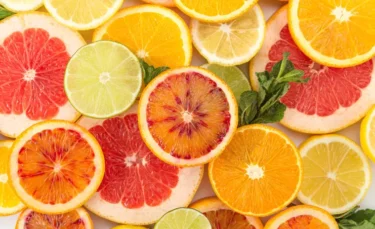
Although it is said that vitamin C supplementation can possibly start periods, there is no scientific data to support this claim3. In fact, this is not a recommended method as high vitamin C doses may lead to kidney stones4.
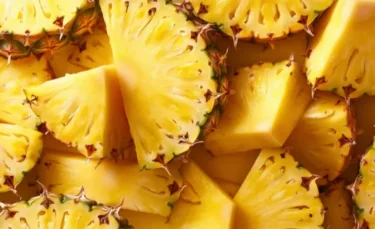
Bromelain, an enzyme in pineapple, may affect menstrual hormones5.
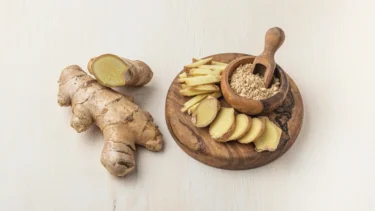
Traditional wisdom believes that ginger can start menstruation by causing uterine contractions, even though there’s no solid proof of this6.
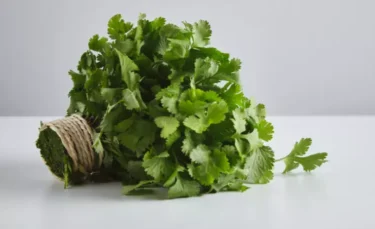
Parsley helps with balancing hormones in women and enhances oestrogen secretion7. Thus, it may help in getting the period sooner.
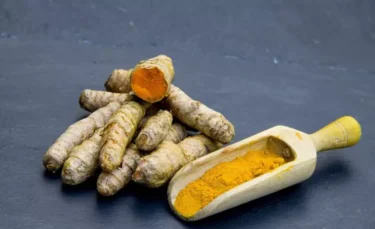
Some people believe turmeric can affect hormone levels and help induce periods, but there’s no scientific proof of this8.
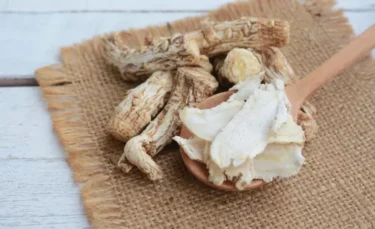
These herbs may increase blood flow to the uterus or help shed the uterine lining, which may lead to periods9.
Caution: Periods cannot be reliably induced or hastened by foods, herbs, or home remedies. Traditional remedies, although believed to influence menstruation, are not proven to be effective and may carry health risks. These methods should be considered traditional beliefs, not evidence-based solutions. Therefore, always consult a gynaecologist before trying to manage or alter your menstrual cycle.
Ideally, one must not disturb body’s natural cycles. If your periods make your daily routine tasks difficult to carry out, consult a gynaecologist for evaluation.
Dr. Arpit Verma, MBBS, MD (Pharmacology)
Changing your lifestyle and being active might help start periods. However, remember, the effectiveness of these methods may vary from person to person.
High doses of vitamin C may induce menses by increasing the levels of oestrogen in the body. Increased levels of this hormone stimulate uterine contractions, which in turn, stimulates bleeding.
Dr. M.G. Kartheeka, MBBS, MD(Pediatrics)
While lifestyle changes may help some individuals, hormonal treatments provided by a healthcare professional are the most reliable way to regulate periods. Always consult your gynaecologist before starting any treatment.
Important caution: Hormonal contraceptives are intended for cycle regulation, not for immediately inducing a period. Any changes to dosage, timing, or method should only be done under a doctor’s supervision.
Also Read: PCOS Diet: How to Use Food to Help Manage Your PCOS
Any attempt to alter normal body function carries risks, and trying to induce a period is no different.
Never attempt to induce your period if there is any possibility of pregnancy, as this can lead to serious complications. Always consult a healthcare provider/doctor before trying any method to manage or regulate your cycle.
While attempting to induce periods can be beneficial sometimes, it has its own set of risks. You might face hormonal imbalances, disturbed period patterns, or side effects from medicines.
It’s important not to try and start your period if there’s a chance you might be pregnant. Substances that induce menstruation can also cause miscarriages.
Repeated irregular cycles may signal underlying health conditions such as PCOS, thyroid disorders, or premature ovarian insufficiency. Therefore, such cases require proper evaluation and workup by a doctor before attempting any intervention.
Get professional help if your period is consistently irregular, you miss three periods in a row, your periods stop before the age of 45, or you bleed between periods or after sex, or postmenopausal bleeding is noted.
Also Read: How To Know If You’re Pregnant?
We’ve covered what affects menstrual cycles, safe ways to manage delays, and the role of both natural and medical approaches. Remember, your body is unique, and variations in periods are normal. However, if your cycles are irregular or you miss three or more periods, consult a gynaecologist to rule out conditions like PCOS, thyroid disorders, or premature ovarian insufficiency. Avoid unproven or unsafe remedies, and rely on a healthcare provider for guidance on period-related concerns.
Also Read: Why is My Period Blood Black? Understanding the Underlying Health Facts
You could feel bloated or moody or have headaches, back pain, tender breasts, and cravings before your period arrives.
The substances used to induce periods can lead to a miscarriage. If you suspect you may be pregnant, do not attempt to induce your period. Instead, speak to a healthcare provider.
It’s important to note that attempting to induce your period artificially can have health risks. Menstrual cycles vary, and it’s best to let them occur naturally. If you have concerns about menstrual cycle irregularities, consult a healthcare professional for personalised advice.
While the chances are low, it is still possible to get pregnant during your period, especially if you have a shorter menstrual cycle. It’s crucial to use contraception consistently if you want to avoid pregnancy, as fertility varies among individuals.
Yes, a menstrual period may be delayed by 10 days due to various factors such as stress, hormonal changes, or underlying health conditions. If concerns persist, it is advisable to consult a healthcare professional for personalised guidance. Your period can be late due to stress.
No, a typical menstrual period does not occur during pregnancy. However, some pregnant individuals may experience light bleeding or spotting, often mistaken for a period. If there’s any uncertainty or concern, it’s essential to seek advice from a healthcare professional.
Yes, occasional period delays are normal and may be influenced by factors such as stress, hormonal fluctuations, or lifestyle changes. However, persistent or significant delays may warrant consultation with a healthcare professional to rule out underlying issues.
It is not possible to induce your period overnight. Menstrual cycles are natural processes influenced by hormonal changes. It’s crucial to maintain a healthy lifestyle, including regular exercise, balanced nutrition, and adequate sleep, for overall reproductive health. If you have concerns about your menstrual cycle, consult a healthcare professional for personalised advice.
Disclaimer: The information provided here is for educational/awareness purposes only and is not intended to be a substitute for medical treatment by a healthcare professional and should not be relied upon to diagnose or treat any medical condition. The reader should consult a registered medical practitioner to determine the appropriateness of the information and before consuming any medication. PharmEasy does not provide any guarantee or warranty (express or implied) regarding the accuracy, adequacy, completeness, legality, reliability or usefulness of the information; and disclaims any liability arising thereof.
Links and product recommendations in the information provided here are advertisements of third-party products available on the website. PharmEasy does not make any representation on the accuracy or suitability of such products/services. Advertisements do not influence the editorial decisions or content. The information in this blog is subject to change without notice. The authors and administrators reserve the right to modify, add, or remove content without notification. It is your responsibility to review this disclaimer regularly for any changes.
लहसुन (गार्लिक) सदियों से हमारी रसोई का हिस्सा रहा है। लहसुन (गार्लिक) की एंटीबैक्टीरियल और एंटीसेप्टिक प्रकृति के कारण इसमें उपचारात्मक और औषधीय गुण होते हैं। लहसुन (गार्लिक) के ये फायदेमंद गुण इसमें मौजूद एलिसिन कंपाउंड के कारण होते हैं। यह फास्फोरस, जिंक, पोटेशियम और मैग्नीशियम जैसे मिनरल से भरपूर है। लहसुन (गार्लिक) में विटामिन C,विटामिन K, फोलेट, नियासिन और थायमिन भी काफी अच्छी मात्रा में पाया जाता है।
यहां 100 ग्राम कच्चे लहसुन (गार्लिक) का पोषण चार्ट दिया गया है। ध्यान दें कि 1 मध्यम से बड़े लहसुन की कली का वज़न 3-8 ग्राम के बीच होता है।
| प्रति 100 ग्राम कच्चा लहसुन (गार्लिक) | वैल्यू | सुझाई गई दैनिक मात्रा का कितनाप्रतिशत है |
| कैलोरी | 149 | 7% |
| कार्बोहाइड्रेट | 33.1 ग्राम | 11% |
| फाइबर | 2.1 ग्राम | 8% |
| फैट | 0.5 ग्राम | 1% |
| प्रोटीन | 6.4 ग्राम | 13% |
| विटामिन B6 | 1.2 मिलीग्राम | 62% |
| विटामिन C | 31.2 मिलीग्राम | 52% |
| थायमिन | 0.2 मिलीग्राम | 13% |
| राइबोफ्लेविन | 0.1 मिलीग्राम | 6% |
| इसमें विटामिन A, E, K, नियासिन, फोलेट, पैंटोथेनिक एसिड और कोलीन भी होता है | ||
| मैंगनीज | 1.7 मिलीग्राम | 84% |
| सेलेनियम | 14.2 माइक्रोग्राम | 20% |
| कैल्शियम | 181 मिलीग्राम | 18% |
| कॉपर | 0.3 मिलीग्राम | 15% |
| फास्फोरस | 153 मिलीग्राम | 15% |
| पोटैशियम | 401 मिलीग्राम | 11% |
| आयरन | 1.7 मिलीग्राम | 9% |
| इसमें जिंक, मैग्नीशियम और सोडियम भी होता है |
Lahsun (Garlic) khaane se sharir ko neeche bataye gaye faayede milte hain:

कच्चे लहसुन (गार्लिक) में खांसी और जुकाम के इंफेक्शन को दूर करने की क्षमता होती है। खाली पेट लहसुन (गार्लिक) की दो कली कुचल कर खाने से सबसे ज़्यादा फायदा होता है। बच्चों और शिशुओं के लिए, लहसुन (गार्लिक) की कलियों को धागे में बांधकर उनके गले में पहनाने से कफ जमने के लक्षणों से राहत मिलती है।

लहसुन (गार्लिक) में पाया जाने वाला एलिसिन कंपाउंड एलडीएल (खराब कोलेस्ट्रॉल) के ऑक्सीकरण को रोकता है। यह कोलेस्ट्रॉल लेवल को कम करता है और दिल की सेहत में सुधार करता है। लहसुन (गार्लिक) का नियमित सेवन से खून के थक्के नहीं जमते हैं और इस तरह से यह थ्रोम्बोएम्बोलिज्म (खून के थक्के से रक्त वाहिका में रुकावट) को रोकने में मदद करता है। लहसुन (गार्लिक) ब्लड प्रेशर को भी कम करता है इसलिए यह हाई ब्लड प्रेशर के रोगियों के लिए अच्छा है।हाई ब्लड प्रेशर को नियंत्रित करने के तरीके के बारे में और पढ़ें।

लहसुन (गार्लिक) अपने एंटीऑक्सीडेंट और एंटी-इंफ्लेमेटरी गुणों के कारण दिमाग की सेहत को बेहतर बनाता है। यह अल्जाइमर और डिमेंशिया जैसी न्यूरोडीजेनेरेटिव बीमारियों (ऐसी बीमारियां जिसमें सेंट्रल नर्वस सिस्टम की कोशिकाएं काम करना बंद कर देती हैं) में असरदार है। अपनी डाइट में शामिल करने वाले सबसे अच्छे ब्रेन फूड्स के बारे में और पढ़ें।

कच्चे लहसुन (गार्लिक) को डाइट में शामिल करने से पाचन से जुड़ी समस्याएं ठीक हो जाती हैं। यह आंतों को फायदा पहुंचाता है और जलन को कम करता है। कच्चा लहसुन (गार्लिक) खाने से पेट के कीड़े मर जाते हैं। अच्छी बात यह है कि यह खराब बैक्टीरिया को नष्ट कर देता है और आंत में अच्छे बैक्टीरिया की रक्षा करता है।

देखा गया है कि डायबिटीज से पीड़ित लोगों द्वारा कच्चे लहसुन (गार्लिक) का सेवन करने पर उनका ब्लड शुगर लेवल नियंत्रित रहता है।

लहसुन (गार्लिक) फ्री रेडिकल्स से रक्षा करता है और डीएनए को होने वाले नुकसान से बचाता है।लहसुन (गार्लिक) में मौजूद जिंक रोग इम्युनिटी बढ़ाता है। विटामिन C इंफेक्शन से लड़ने में मदद करता है। यह आंख और कान के इंफेक्शन में बहुत फायदेमंद होता है क्योंकि इसमें एंटीमाइक्रोबियल (रोगाणुरोधी) गुण होते हैं।

लहसुन (गार्लिक) मुंहासों को रोकने में मदद करता है और मुंहासों के निशान को हल्का करता है। कोल्ड सोर (मुंह के किनारे होने वाले छाले या फफोले), सोराइसिस, चकत्ते और छाले, इन सभी सभी परेशानियों में लहसुन (गार्लिक) के रस इस्तेमाल से फायदा मिल सकता है। यह यूवी किरणों से भी बचाता है और इसलिए स्किन की उम्र बढ़ने से रोकता है।
Read in English: 7 Home Remedies for Glowing Skin

लहसुन (गार्लिक) में उज़्यादा मात्रा में एंटीऑक्सीडेंट होते है जिसके कारण यह फेफड़े, प्रोस्टेट, ब्लेडर, पेट, लिवर और पेट के कैंसर से शरीर की रक्षा करता है। लहसुन (गार्लिक) का एंटीबैक्टीरियल (जीवाणुरोधी) एक्शन पेप्टिक अल्सर को रोकता है क्योंकि यह आंत में इसे बढ़ने नहीं देता है।

लहसुन (गार्लिक) फैट जमा करने वाली एडीपोज सेल्स (वसा कोशिकाओं) के निर्माण के लिए जिम्मेदार जीन को कम करता है। यह शरीर में थर्मोजेनेसिस को भी बढ़ाता है और ज़्यादा फैट बर्न करने और एलडीएल (खराब कोलेस्ट्रॉल) को कम करने में मदद करता है।
लहसुन (गार्लिक) वज़न घटाने के लिए तो अच्छा है ही, साथ ही यह बहुत ज़्यादा पौष्टिक भी है। लहसुन (गार्लिक) की एक कली जो लगभग 3 ग्राम होती है, उसमें निम्नलिखित पोषण होता है :

लहसुन (गार्लिक) को “परफॉरमेंस बढ़ाने वाले” पदार्थों में से एक माना जाता है। पुराने ज़माने में मजदूरों की थकान मिटाने और उनकी कार्य क्षमता में सुधार करने के लिए लहसुन (गार्लिक) का इस्तेमाल किया जाता था। चूहों पर किए गए अध्ययन से पता चलता है कि लहसुन (गार्लिक) खाने से एक्सरसाइज परफॉरमेंस में सुधार करने में मदद मिलती है। जिन लोगों को दिल की बीमारी थी, उन्होंने 6 सप्ताह तक लहसुन (गार्लिक) का सेवन किया और इसके कारण उनकी हार्ट रेट (हृदय गति) में 12% की कमी आई और एक्सरसाइज करने की क्षमता ज़्यादा बेहतर हो गई।

ताजा लहसुन (गार्लिक) के रस में ई. कोली बैक्टीरिया के विकास को कम करने की क्षमता होती है जो मूत्र मार्ग में इंफेक्शन (यूटीआई) का कारण बनते हैं। यह किडनी इंफेक्शन को रोकने में भी मदद करता है।
लहसुन (गार्लिक) घावों के इंफेक्शन को कम करता है, बालों, हड्डियों की सेहत और लिवर की सेहत को बढ़ावा देता है। ज़्यादातर घरेलू उपचार तभी असरदार साबित होते हैं जब लहसुन (गार्लिक) को कच्चा खाया जाता है।

जापान के अध्ययनों के मुताबिक, पानी और अल्कोहल के मिश्रण में रखे गए कच्चे लहसुन (गार्लिक) को खाने से एक्सरसाइज की सहनशक्ति पर अहम असर पड़ सकता है। इंसानों पर भी अध्ययन किए गए हैं जिनसे पता चला है कि लहसुन (गार्लिक) वास्तव में एक्सरसाइज से होने वाली थकान के लक्षणों में सुधार कर सकता है।

जिन लोगों को काम के कारण सीसे (लेड) की विषाक्तता का ज़्यादा खतरा होता है, उनके लिए लहसुन (गार्लिक) सबसे अच्छा ऑर्गेनिक समाधान हो सकता है। 2012 में किए गए अध्ययनों से पता चला है कि लहसुन (गार्लिक) वास्तव में खून में सीसे (लेड) की विषाक्तता के इलाज के लिए इस्तेमाल की जाने वाली सामान्य दवा डी-पेनिसिलमाइन की तुलना में ज़्यादा सुरक्षित और बेहतर है।

बुज़ुर्ग महिलाओं के लिए मेनोपॉज़ (रजोनिवृत्ति) की अवधि अक्सर साइटोकिन नाम के प्रोटीन के अनियमित उत्पादन के कारण एस्ट्रोजन नामक मादा हार्मोन की कमी से जुड़ी हुई है। यह देखा गया है कि लहसुन (गार्लिक) का सेवन इसे कुछ हद तक नियंत्रित कर सकता है और इसलिए, यह मेनोपॉज़ (रजोनिवृत्ति) के बाद एस्ट्रोजन की कमी को दूर करने में प्रभावी हो सकता है।

अपनी नियमित डाइट में लहसुन (गार्लिक) खाने से यह ऑस्टियोआर्थराइटिस (अस्थिसंधिशोथ) की शुरुआत को रोकने या कम करने में भी मदद कर सकता है। रिसर्च से पता चला है कि लहसुन (गार्लिक) में डायलिल डाइसल्फाइड नाम का कंपाउंड होता है जो हड्डियों की डेंसिटी (घनत्व) को बनाए रखने में मदद करता है और इसलिए ऑस्टियोआर्थराइटिस (अस्थिसंधिशोथ) जैसी हड्डियों से संबंधित बीमारियों की शुरुआत होने में देरी कर सकता है।

माना जाता है कि लहसुन (गार्लिक) आपके खून में प्लेटलेट्स की चिपचिपाहट को कम करने में मदद करता है। ये प्लेटलेट्स खून के थक्के जमने के लिए जिम्मेदार होते हैं। लहसुन (गार्लिक) की सही खुराक लेने से खून पर प्लेटलेट्स के अत्यधिक थक्का जमने के प्रभाव को कम करने में मदद मिल सकती है। इसलिए, यह धमनियों (आर्टरी) के अंदर ऐसे अनावश्यक खून के थक्कों को रोकने में मदद कर सकता है जो आपके दिल तक पहुंच सकते हैं जिससे दिल का दौरा पड़ सकता है।
जब आप लहसुन (गार्लिक) को मुंह से लेते हैं तो यह ज़्यादातर सुरक्षित होता है। इससे सांसों की बदबू, सीने में जलन, गैस और दस्त जैसे साइड इफेक्ट हो सकते हैं। अगर आप मुंह से कच्चा लहसुन खाते हैं, तो साइड इफेक्ट अक्सर खराब होते हैं और कुछ लोगों में ब्लीडिंग (रक्तस्राव) और एलर्जी का खतरा बढ़ सकता है।
लहसुन (गार्लिक) के जैल और पेस्ट जैसे प्रोडक्ट सुरक्षित हैं। लेकिन लहसुन (गार्लिक) स्किन को नुकसान पहुंचा सकता है जिससे जलन हो सकती है। ख़ास तौर पर कच्चे लहसुन (गार्लिक) को स्किन पर लगाने से स्किन में गंभीर जलन हो सकती है।
गर्भावस्था के दौरान या या स्तनपान कराने वाली माताओं को ज़्यादा मात्रा में लहसुन (गार्लिक) खाने से बचना चाहिए। बच्चे इसे 8 सप्ताह तक रोजाना तीन बार 300 मिलीग्राम तक की खुराक में ले सकते हैं और इससे अधिक नहीं लेनी चाहिए। ब्लीडिंग (रक्तस्राव) की समस्या वाले लोगों को लहसुन (गार्लिक) खाने से बचना चाहिए। अगर आप सर्जरी करवाएं, तो लहसुन (गार्लिक) का सेवन न करें क्योंकि यह ब्लीडिंग (रक्तस्राव) को बढ़ा सकता है और ब्लड प्रेशर में बाधा उत्पन्न कर सकता है। सर्जरी से दो हफ्ते पहले लहसुन (गार्लिक) खाना बंद कर दें और लहसुन (गार्लिक) ब्लड शुगर लेवल को भी कम कर सकता है, इसलिए आपको जागरूक और सावधान रहना चाहिए।
Disclaimer: The information provided here is for educational/awareness purposes only and is not intended to be a substitute for medical treatment by a healthcare professional and should not be relied upon to diagnose or treat any medical condition. The reader should consult a registered medical practitioner to determine the appropriateness of the information and before consuming any medication. PharmEasy does not provide any guarantee or warranty (express or implied) regarding the accuracy, adequacy, completeness, legality, reliability or usefulness of the information; and disclaims any liability arising thereof.
Links and product recommendations in the information provided here are advertisements of third-party products available on the website. PharmEasy does not make any representation on the accuracy or suitability of such products/services. Advertisements do not influence the editorial decisions or content. The information in this blog is subject to change without notice. The authors and administrators reserve the right to modify, add, or remove content without notification. It is your responsibility to review this disclaimer regularly for any changes.
एक अच्छी सेक्स लाइफ आपकी संपूर्ण सेहत को फायदा पहुंचाती है और अपने पार्टनर से हर दिन प्यार करने से बेहतर कोई तरीका नहीं हो सकता है। अच्छा सेक्स सिर्फ बच्चे पैदा करने के लिए नहीं होता है, बल्कि यह मानसिक, भावनात्मक और सामाजिक जीवन को भी बेहतर बनाता है।
सेक्सुअल एक्टिविटी का मतलब सिर्फ अनप्लांड गर्भधारण और बीमारियों से बचना नहीं है, बल्कि इससे आपकी मानसिकता भी अच्छी होती है। हर दिन अच्छा सेक्स करने में कोई बुराई नहीं है और यह आर्टिकल आपको इस बात की जानकारी देगा कि आपकी सेहत को इससे क्या फायदे मिल सकते हैं।
क्या आप जानते हैं कि सेक्स कार्डियोवैस्कुलर हेल्थ को बढ़ाता है और आपके दिल को सेहतमंद रखता है? तो रोज़ाना सेक्स करने से आपकी निजी ज़िंदगी में क्या होता है? यहाँ आपको इसी चीज़ की जानकारी दी जा रही है।
आपको अपनी सेक्सुअल इच्छाओं को प्राथमिकता देने के बजाय अपने पार्टनर को संतुष्ट करने पर ध्यान केंद्रित करना होगा। बेड पर अपने पार्टनर अच्छी तरह से समझना और यह देखना कि उसे सबसे ज़्यादा क्या अच्छा लगता है, यही तो एक अच्छी सेक्स लाइफ का मतलब होता है । इससे आप दोनों के बीच इंटिमेसी बढ़ेगी और आपकी सेक्स लाइफ और ज़्यादा दिलचस्प बन जाएगी। याद रखें आप जितना ज़्यादा सेक्स करते हैं, आपकी शादीशुदा ज़िंदगी या रिलेशनशिप उतने ही बेहतर होते हैं। यहां रोज़ाना सेक्स करने से सेहत को मिलने वाले कुछ फायदों के बारे में बताया जा रहा है।
सेक्स करने से आपके शरीर में ऑक्सीटोसिन और एंडोर्फिन नाम के हार्मोन रिलीज़ होते है जो इंटिमेसी (अंतरंगता) बढ़ाते हैं और आपको बार-बार सेक्स करने की इच्छा होती है। ये सेक्स हार्मोन बेहतर नींद लाने में मदद करते हैं और अच्छी नींद लेने से नीचे बताए गए फायदे मिलते हैं:
ध्यान दें: ऑर्गेज़्म या हस्तमैथुन से भी ऊपर बताए गए फायदे मिल सकते हैं। ऑर्गेज़्म की तुलना में सेक्स से थोड़ा जल्दी नतीजे मिलते हैं।
रोजाना सेक्स करने से सेक्स मूड को बढ़ाने के लिए जिम्मेदार एंडोर्फिन हार्मोन बढ़ते हैं जिनसे तनाव कम होता है। इस बात को न भूलें कि सेक्स एक तरह की एक्सरसाइज है जो तनाव को कम करती और आपको शांत रखती है। जब भी आप तनाव में हों, तो बस अपने पार्टनर के साथ सेक्स करें। आसान है ना? जी हां, यह तनाव को मात देने का सबसे तेज लेकिन सेहतमंद तरीका है।
बहुत ज़्यादा तनाव की वजह से ब्लड प्रेशर की समस्या होने का खतरा हो सकता है। आप जितना ज़्यादा सेक्स करेंगे, उतना ही आप देखेंगे कि आपका तनाव कम होता जा रहा है और इसी वजह से आप ब्लड प्रेशर के जोखिम से बच जाते हैं। हस्तमैथुन भी ब्लड प्रेशर के जोखिम को कम करता है क्योंकि इससे नसों को आराम मिलता है और आपके दिमाग को मजबूत रखता है।
सुबह चेहरे पर आने वाला ग्लो अब सिर्फ कल्पना नहीं है। अगर आप मुहांसे या ड्राई स्किन की समस्या से पीड़ित हैं, तो आपको अपने पार्टनर के साथ रोज़ाना सेक्स करना चाहिए और आप देखेंगे कि आपकी स्किन में एक वाइब्रेंट टेक्सचर नज़र आ रहा है। इस नेचुरल ग्लो का श्रेय तनाव मुक्त होने और पॉजिटिव सोच को दिया जा सकता है। आप जितना ज़्यादा सेक्स करेंगे, आपका रिलेशनशिप भी उतना ही अच्छा होगा। रोजाना सेक्स के लिए हां कहकर अपनी स्किन में ग्लो लाएं।
क्या आप पीरियड के दर्द से परेशान हैं? आपके पीरियड्स के दौरान सेक्स करने से वास्तव में इस दर्द को कम किया जा सकता है। ऐसा करने में आपको असहज महसूस हो सकता है, लेकिन इससे मदद मिलती है और गर्भवती होने के जोखिम भी कम होते हैं। अगर आप अपने पीरियड्स के दौरान सेक्स करने में असहज महसूस कर रही हैं, तो यह सोचें कि आप अपने प्रियजन की तस्वीर देख रही हैं और आप पाएंगे कि पीरियड का दर्द कम हो रहा है। यह आपको पीरियड्स के गंभीर दर्द से राहत दिलाने का एक मनोवैज्ञानिक तरीका है। इसके अलावा, पीरियड के दर्द से छुटकारा पाने के लिए खुद ऑर्गेज्म तक पहुंचने पर विचार करें।
लंबे समय तक सेक्स करने के लिए तैयार महसूस नहीं कर रहे हैं? आप जितना ज़्यादा सेक्स करते हैं उतना ही आपके यौन सुख में बढ़ोतरीहोती है। ज़्यादा सेक्स लंबी, सेहतमंद और तनाव मुक्त ज़िंदगी जीने में मदद करता है। अगर आपके पार्टनर को सेक्स करने की इच्छा में कमी महसूस हो रही है तो उसे उसकी इच्छा से ज़्यादा देने की कोशिश करें। इसके लिए आपको अपने पार्टनर की बेतहाशा इच्छाओं को समझने की जरूरत है क्योंकि उन पर ध्यान केंद्रित करने से सेक्सुअल डिजायर (यौन इच्छा) को बेहतर करने में मदद मिलेगी। आप अपने हाथों से भी बहुत कुछ कर सकते हैं। अगर आप यह सब संवेदनशील तरीके से करते हैं और अपने पार्टनर के सेक्सुअल डिजायर (यौन इच्छा) पर ध्यान केंद्रित करते हैं, तो सब कुछ ठीक हो जाएगा।
रोजाना सेक्स करने से स्ट्रोक जैसी दिल की बीमारियों और ब्लड प्रेशर के खतरे को कम करने में मदद मिलती है। आप जितना ज़्यादा सेक्स करेंगे, उतना ही आप देखेंगे कि आपका दिल बेहतर और मजबूत होता जा रहा है। तो यह कैसे होता है? बहुत आसान है! आप सेक्स के दौरान काफी ज़ोर से सांस लेते हैं और यह रेस्पिरेटरी (श्वसन) एक्सरसाइज के तौर पर काम करता है और आपके दिल की कार्यप्रणाली को बेहतर बनाता है।
क्या आप वजन कम करना चाहते हैं? इसके लिए नियमित सेक्स सबसे अच्छा तरीका है। जी हाँ, रोजाना सेक्स करना कैलोरी बर्न करने का एक नेचुरल तरीका है। बहुत ही ज़्यादा सेक्स ड्रिवन कपल सेक्स के 30 मिनट के अंदर औसतन 108 कैलोरी बर्न कर देता है। किस करने की भी कोशिश करें क्योंकि यह बहुत तेजी से कैलोरी बर्न करता है।
लंबे समय तक जीने का राज क्या है? इसका जवाब है सेक्स है। आपको जितना ज़्यादा ऑर्गेज़्म होगा, उतना ही अधिक आप लंबे समय तक ज़िंदा रहेंगे। इसके अलावा, ध्यान रखें कि आप एक सेक्स बूस्ट करने वाली डाइट लें जिसमें बादाम, अखरोट, एवोकाडो, डार्क चॉकलेट, केला, तरबूज आदि शामिल हैं। एक एक्टिव लाइफस्टाइल ज़्यादा आनंद और लंबी उम्र प्रदान करती है।
नियमित सेक्स टेस्टोस्टेरोन और एस्ट्रोजन दोनों के लेवल को बढ़ाता है। आमतौर पर पुरुषों में ज़्यादा टेस्टोस्टेरोन और कम एस्ट्रोजेन होता है, महिलाओं में इसके उलट होता है। नियमित सेक्स पुरुषों और महिलाओं में इन दोनों हार्मोनों के उत्पादन को बढ़ाता है। ज़्यादा टेस्टोस्टेरोन की वजह से बेहतर सेक्स ड्राइव, एक मजबूत मस्कुलोस्केलेटल सिस्टम और बेहतर हार्ट हेल्थ जैसे फायदे मिलते हैं। एस्ट्रोजन का हाई लेवल महिलाओं में दिल की बीमारी के जोखिम को कम करता है और पुरुषों में एक शांत व्यक्तित्व (कम टेस्टोस्टेरोन के साथ मिलकर) लाता है।
रोज़ाना सेक्स करने से भी वैसे ही फायदे मिलते हैं जो नियमित एक्सरसाइज करने से मिलते हैं। यह डोपामाइन, सेरोटोनिन, एंडोर्फिन और ऑक्सीटोसिन जैसे हैप्पी और रिवॉर्ड हार्मोन रिलीज़ करता है। ये फील-गुड हार्मोन डिप्रेशन को दूर करने में मदद करते हैं और इसके होने के जोखिम को कम कर सकते हैं। हालांकि, उत्तेजना और रिवॉर्ड की अचानक कमी (जैसे अचानक सेक्स न करना) के परिणामस्वरूप सब्सटेंस विड्रॉल के जैसा कुछ हो सकता है।
कुछ अध्ययनों में पाया गया कि नियमित सेक्स का महिलाओं की याददाश्त पर सकारात्मक प्रभाव पड़ता है, इसे हिप्पोकैम्पस की उत्तेजना से संबंधित माना जाता है। हिप्पोकैम्पस आपके दिमाग का एक हिस्सा है जो याद रखने और सीखने की प्रक्रिया में शामिल है और माना जाता है कि सेक्स इस क्षेत्र को सक्रिय करता है।
अच्छी सेक्स लाइफ का मतलब खुद से ज़्यादा अपने पार्टनर की वाइल्ड फैंटसी को प्राथमिकता देना है। यह एक सफल रिलेशनशिप की पहली सीढ़ी है।जब आप यह चीज़ सही कर लेते हैं तो कुछ सेक्स बूस्टिंग आईडिया हैं जिन्हें फॉलो करके आपको आप और आपके पार्टनर अपना सर्वश्रेष्ठ दे पाएंगे।
यह भी पढ़ें: आपको कैसे और क्यों हस्तमैथुन (Masturbation in Hindi) बंद करना चाहिए?
अच्छी सेक्सुअल लाइफस्टाइल आपकी संपूर्ण लाइफस्टाइल के लिए आपकी कल्पना से कहीं बेहतर कर सकती है। सेक्स ड्राइव को बढ़ावा देने के लिए आपको बेड में अच्छा होना होता है। अपने पार्टनर की सेक्सुअल फैंटसी को समझना बेड में अच्छा और लंबा समय बिताने के लिए पहला कदम है। रोज़ाना सेक्स करना आपके संपूर्ण सेहत के लिए अच्छा है और यहाँ कुछ अक्सर पूछे जाने वाले सवाल हैं जो आपको इसके कुछ अन्य पहलुओं के बारे में जानकारी देंगे।
स्ट्रॉबेरी
अखरोट
एवोकाडो
बादाम
तरबूज
लहसुन
ध्यान रखें : अगर आप नियमित तौर पर शराब पीते हैं, तो इसे कुछ समय के लिए ब्रेक दें और अपने पार्टनर को बेड में सबसे अच्छा महसूस कराने पर ध्यान दें।
हां, महिलाओं का यौन भावनाओं पर बेहतर नियंत्रण होता है और वे पुरुषों की तुलना में अधिक समय तक बिना सेक्स के रह सकती हैं। हालांकि सेक्स उन्हें अच्छा लगता है, लेकिन उन्हें सेक्सुअल एक्टिविटी में शामिल होने से पहले सुरक्षा की चिंता रहती है, और यह तय करने की उनकी क्षमता निर्धारित कर सकती है कि उन्हें सेक्स की आवश्यकता है या नहीं है। इसलिए, अपने पार्टनर में विश्वास पैदा करें और उन भावनाओं के प्रति संवेदनशील रहें जो उसे आपको अपना सर्वश्रेष्ठ देने के लिए प्रेरित करेंगी।
बहुत आसान है ! पुरुष का स्पर्म (शुक्राणु) इन्फर्टाइल है या नहीं, यह देखने के लिए सीमेन एनालिसिस टेस्ट किया जाता है। वर्तमान में यह टेस्ट इसलिए किया जाता है क्योंकि बांझपन के ज़्यादातर मामले महिलाओं की तुलना में पुरुष के बांझ होने के कारण होते हैं। आपको सलाह दी जाती है कि आप सुरक्षित रहने के लिए शादी से पहले ऐसा करें।
महिलाएं 40 से 65 साल की उम्र के बीच कभी भी सेक्स करने की इच्छा खो देती हैं। इसलिए ध्यान रखें कि जब आपके पास पूरी एनर्जी, इंटिमेसी (अंतरंगता) और इसे करने का इच्छा हो तो इसका बेहतर तरीके से आनंद लें।
रोजाना सेक्स करने में कोई बुराई नहीं है और यह आपकी संपूर्ण सेहत के लिए फायदेमंद है। अच्छी कार्डियोवैस्कुलर हेल्थ हो या दमकती स्किन, सेक्स आपके रिश्ते को जीवंत, दिलचस्प और अंतरंग बनाए रखने का सबसे अच्छा तरीका है। प्यार करो, एक दूसरे से प्यार करो और खुशी से जियो।
कई लोग पीरियड सेक्स की सुरक्षा और खूबियों के बारे में डिबेट करते हैं। जब तक आप अपने पीरियड के दौरान सेक्स करने के विचार से बेहद असहज न हों, तब तक ऐसा करना पूरी तरह से सुरक्षित है। इसके अलावा, जब आप अपने पीरियड के दौरान सेक्स करते हैं तो आपको निम्नलिखित फायदे मिल सकते हैं:
छोटे पीरियड : पीरियड के समय मसल कॉन्ट्रेक्शन (मांसपेशियों के संकुचन) से युटरीन कंटेंट तेजी से बाहर निकलता है जिससे आपका पीरियड छोटा हो जाता है।
लिबिडो (सेक्स करने की इच्छा) में बढ़ोतरी: कई महिलाओं में उनके पीरियड के दौरान सेक्स ड्राइव में बढ़ोतरी देखी गई है, जिसका मतलब है कि वे ज़्यादा आनंद का अनुभव करेंगी।
पीरियड के दर्द से राहत: ऑर्गेज्म के समय गर्भाशय की मांसपेशियां सिकुड़ती हैं और फिर रिलीज़ होती हैं, जिससे क्रैम्प से जुड़ा दर्द कम हो जाता है।
पीरियड के दर्द से जुड़े माइग्रेन या सिरदर्द को कम करता है।
हां, गर्भावस्था के दौरान सेक्स करना काफी सुरक्षित है। बच्चा एमनियोटिक फ्लूइड और गर्भाशय की मांसपेशियों की दीवारों द्वारा सुरक्षित होता है। इसलिए पेनिट्रेटिव सेक्स के दौरान बच्चे को नुकसान पहुंचने का कोई खतरा नहीं होता है। लेकिन अगर आपके डॉक्टर ने गर्भपात के पिछले इतिहास के कारण आपसे विशेष रूप से कहा हो, गर्भाशय में आपकी नाल बहुत कम हो, आपको जुड़वाँ या तीन बच्चे होने वाले हों या आप अपनी गर्भावस्था के अंतिम सप्ताह में हों, तो आपको सेक्स करने से बचना चाहिए ।
आपको बच्चे को जन्म देने के बाद अपनी सेक्सुअल एक्टिविटी को फिर से शुरू करने से पहले लगभग 4-6 सप्ताह तक इंतजार करना चाहिए। अगर आप 6 सप्ताह के बाद भी असहज महसूस करते हैं, तो थोड़े ज़्यादा समेत तक इंतज़ार करें।
हर दिन सेक्स करना कई जोड़ों के लिए सुरक्षित और आनंददायक हो सकता है, अंतरंगता को बढ़ावा दे सकता है और भावनात्मक बंधन को मजबूत कर सकता है। हालाँकि, संचार बनाए रखना और यह सुनिश्चित करना आवश्यक है कि दोनों साथी सहज और सहमत हों। समय के साथ, व्यक्तिगत कामेच्छा, शारीरिक सहनशक्ति और रिश्ते की गतिशीलता यौन गतिविधि की आवृत्ति और तीव्रता को प्रभावित कर सकती है।
बार-बार स्खलन, जैसे रोजाना सेक्स करना, कुछ पुरुषों में शुक्राणुओं की संख्या को अस्थायी रूप से कम कर सकता है। हालाँकि, अधिकांश पुरुषों के लिए, शुक्राणु उत्पादन आम तौर पर तेजी से बढ़ता है, और बार-बार स्खलन के कारण शुक्राणुओं की संख्या में कभी-कभी गिरावट से लंबे समय में प्रजनन क्षमता पर महत्वपूर्ण प्रभाव पड़ने की संभावना नहीं है।
ओव्यूलेशन के समय के आसपास रोजाना सेक्स करने से गर्भवती होने की कोशिश कर रहे जोड़ों के लिए गर्भधारण की संभावना बढ़ सकती है। हालाँकि, व्यक्तिगत प्रजनन कारकों पर विचार करना और गर्भधारण के लिए संभोग के समय पर व्यक्तिगत सलाह के लिए स्वास्थ्य देखभाल पेशेवर से परामर्श करना आवश्यक है।
दैनिक सेक्स आम तौर पर कमजोरी का कारण नहीं बनता है जब तक कि इससे शारीरिक थकावट या निर्जलीकरण न हो। सहमति से की गई यौन गतिविधि, जब सुरक्षित रूप से और उचित जलयोजन और आराम के साथ की जाती है, तो इसके परिणामस्वरूप कमजोरी होने की संभावना नहीं होती है और यहां तक कि शारीरिक और भावनात्मक कल्याण पर भी सकारात्मक प्रभाव पड़ सकता है।
हर दिन सेक्स करने से अपने आप वजन कम होने की संभावना नहीं है। हालाँकि यह कुछ कैलोरी जलाता है, लेकिन यह कोई बड़ा अंतर लाने के लिए पर्याप्त नहीं है। लेकिन यह समग्र स्वस्थ जीवनशैली का एक मज़ेदार हिस्सा हो सकता है।
रोजाना सेक्स करने से आम तौर पर सीधे तौर पर मासिक धर्म में देरी नहीं होती है। मासिक धर्म चक्र मुख्य रूप से हार्मोनल उतार-चढ़ाव से नियंत्रित होते हैं, न कि यौन गतिविधि से। हालाँकि, तनाव, दिनचर्या में बदलाव या कुछ चिकित्सीय स्थितियाँ कभी-कभी मासिक धर्म की नियमितता को प्रभावित कर सकती हैं।
दैनिक सेक्स सहित बार-बार यौन गतिविधि, कुछ व्यक्तियों में मूत्र पथ के संक्रमण (यूटीआई) के खतरे को बढ़ा सकती है, खासकर अगर उचित स्वच्छता प्रथाओं का पालन नहीं किया जाता है। यूटीआई तब हो सकता है जब बैक्टीरिया मूत्र पथ में प्रवेश करते हैं, अक्सर संभोग के दौरान। हालाँकि, अच्छी स्वच्छता बनाए रखने, हाइड्रेटेड रहने और सेक्स के बाद पेशाब करने से यूटीआई की संभावना को कम करने में मदद मिल सकती है।
ओव्यूलेशन के आसपास रोजाना सेक्स करने से महिला की उपजाऊ खिड़की के करीब होने के कारण गर्भधारण की संभावना बढ़ सकती है। हालाँकि, शुक्राणु स्वास्थ्य, समय और समग्र प्रजनन क्षमता जैसे कारक भी गर्भधारण की संभावना को प्रभावित करते हैं, इसलिए अकेले दैनिक सेक्स गर्भावस्था की गारंटी नहीं दे सकता है
रोजाना सेक्स करने से आम तौर पर मांसपेशियों का नुकसान नहीं होता है। हालाँकि यौन गतिविधि में शारीरिक परिश्रम शामिल हो सकता है, लेकिन यह इतना तीव्र या लंबा नहीं होता कि मांसपेशियों में महत्वपूर्ण कमी आ जाए। नियमित व्यायाम और संतुलित आहार मांसपेशियों को बनाए रखने में अधिक प्रभावशाली कारक हैं।
Disclaimer: The information provided here is for educational/awareness purposes only and is not intended to be a substitute for medical treatment by a healthcare professional and should not be relied upon to diagnose or treat any medical condition. The reader should consult a registered medical practitioner to determine the appropriateness of the information and before consuming any medication. PharmEasy does not provide any guarantee or warranty (express or implied) regarding the accuracy, adequacy, completeness, legality, reliability or usefulness of the information; and disclaims any liability arising thereof.
Next Page »